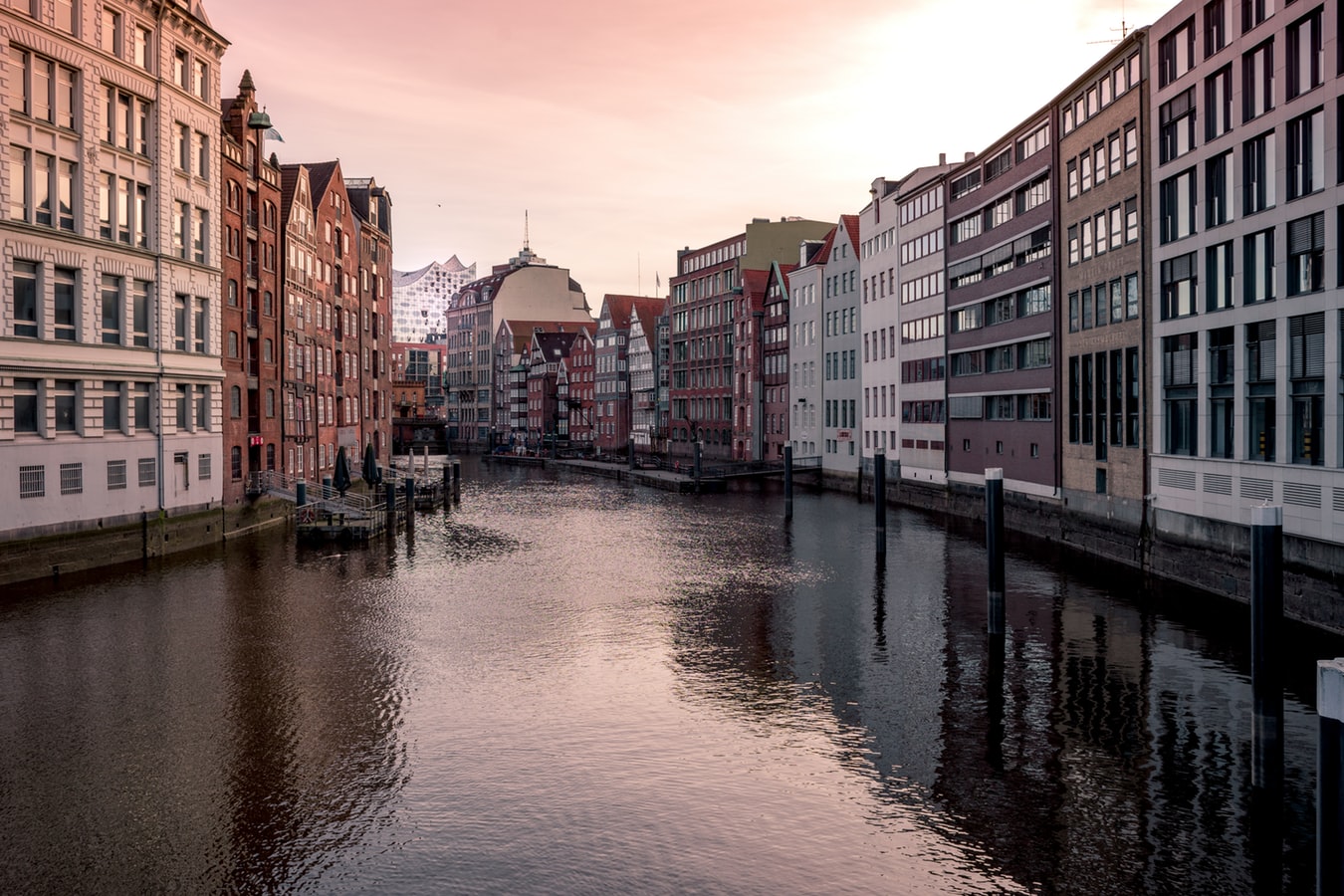
Picturesque Iceland And Sacred Scottish Sites
Picturesque Iceland And Sacred Scottish Sites
Cruise overview
WHY BOOK WITH US?
- ✔ The Deluxe Cruises’ team has extensive experience in ultra-luxury cruising.
- ✔ Call now to speak to our helpful and experienced Cruise Concierge team.
- ✔ Enjoy our Unique Deluxe Cruises Bonus for substantial savings.
- ✔ Our team will tailor your holiday to your exacting requirements.
- ✔ As agents, we work under the protection of each cruise lines ABTA / ATOL licences
About Hamburg
Hamburg is Germany’s second-largest city with a history dating back to Charlemagne. A major port, this vibrant city is home to art and culture, extensive shopping facilities, Baroque buildings and waterfront vistas. With its well-known fish market, art galleries and Museums together with several beautiful parks including a botanical garden, this is a city with something for everyone. British visitors who remember the Swinging Sixties may like to visit the streets around Grosse Freiheit, where an unknown pop group called The Beatles gave their first public performances in various local clubs before achieving worldwide fame.

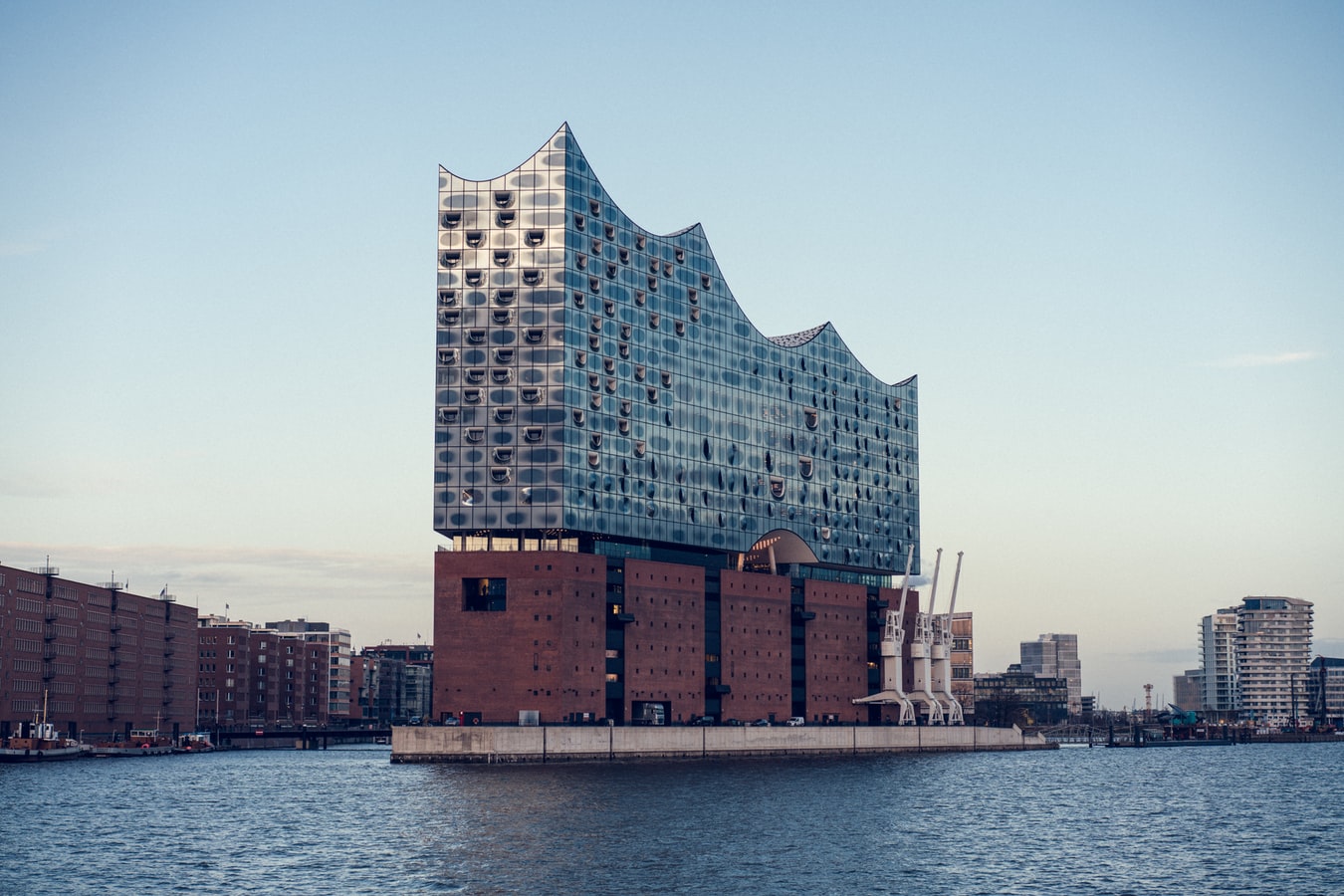
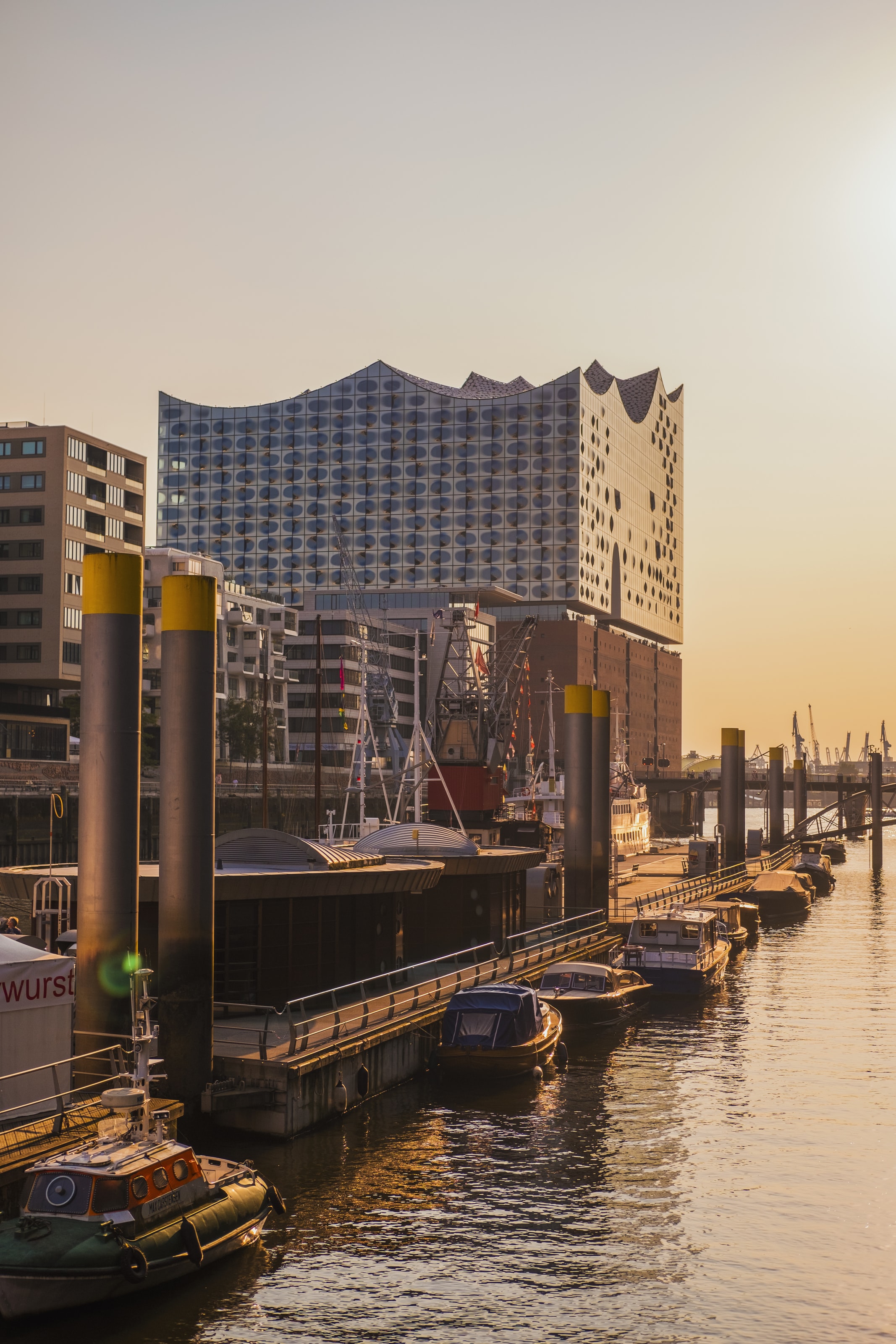
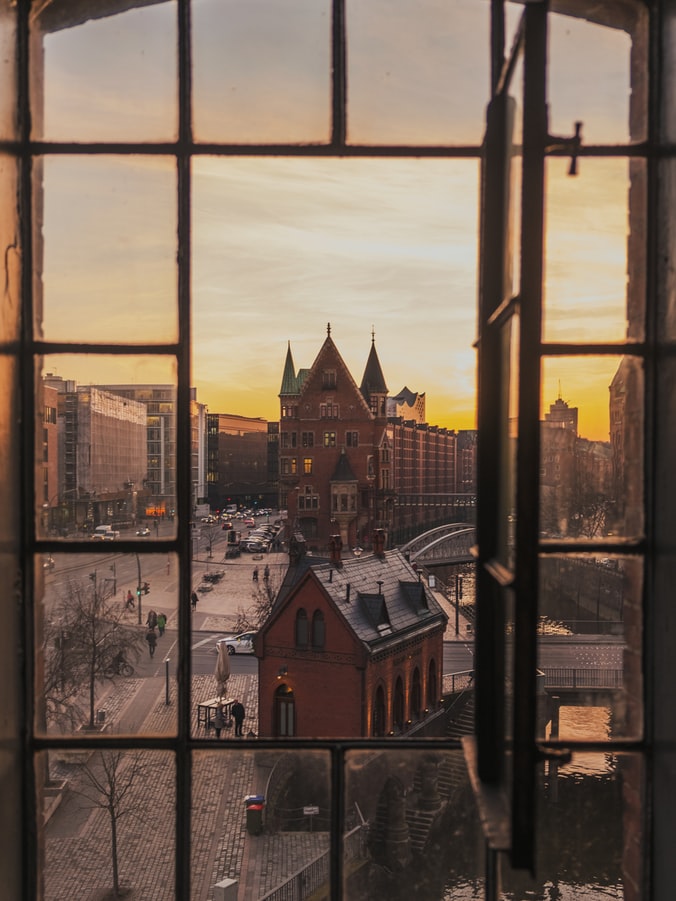
About Bergen
Surrounded by mountains and sparkling fjords, the waterside city of Bergen has a spectacular setting. There has been a settlement here since medieval times and the colourful waterfront buildings of the Hanseatic wharf, known as Bryggen, are testament to its fascinating history of trade. As Norway’s best known medieval settlement, the Bryggen is listed by UNESCO as a World Heritage Site. Our comprehensive selection of excursions allows you to discover the many sides of Bergen, such as the fish market and narrow cobbled streets, as well as stunning views of the city from the summit of Mt Fløyen. Alternatively, those who have visited the city previously may like to experience one of the tours that travel further afield. Just 300 yards from the main piers, you will find the Fortress Museum (Fesningsmuseum), which has an interesting collection of objects related to World War II.
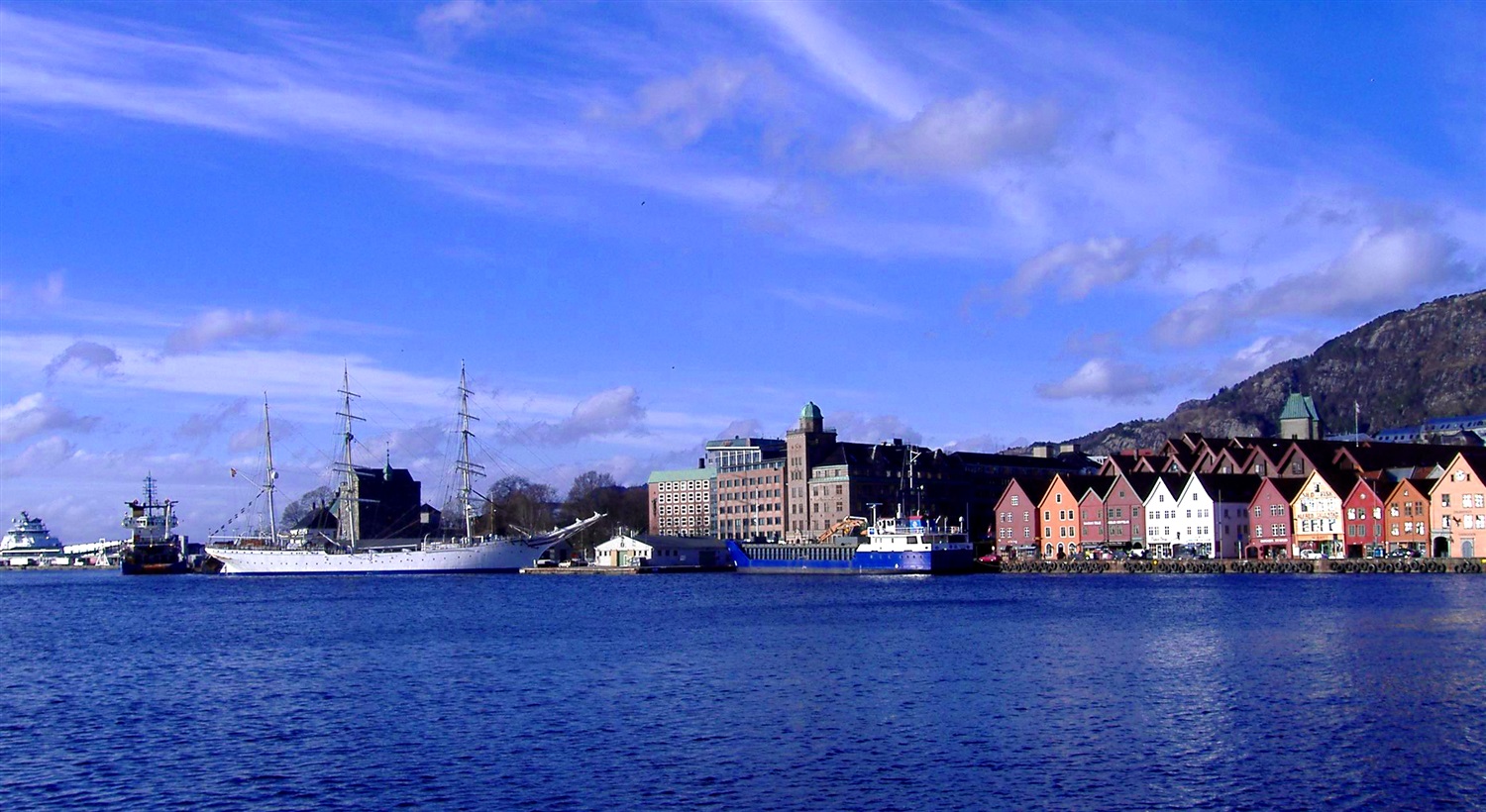
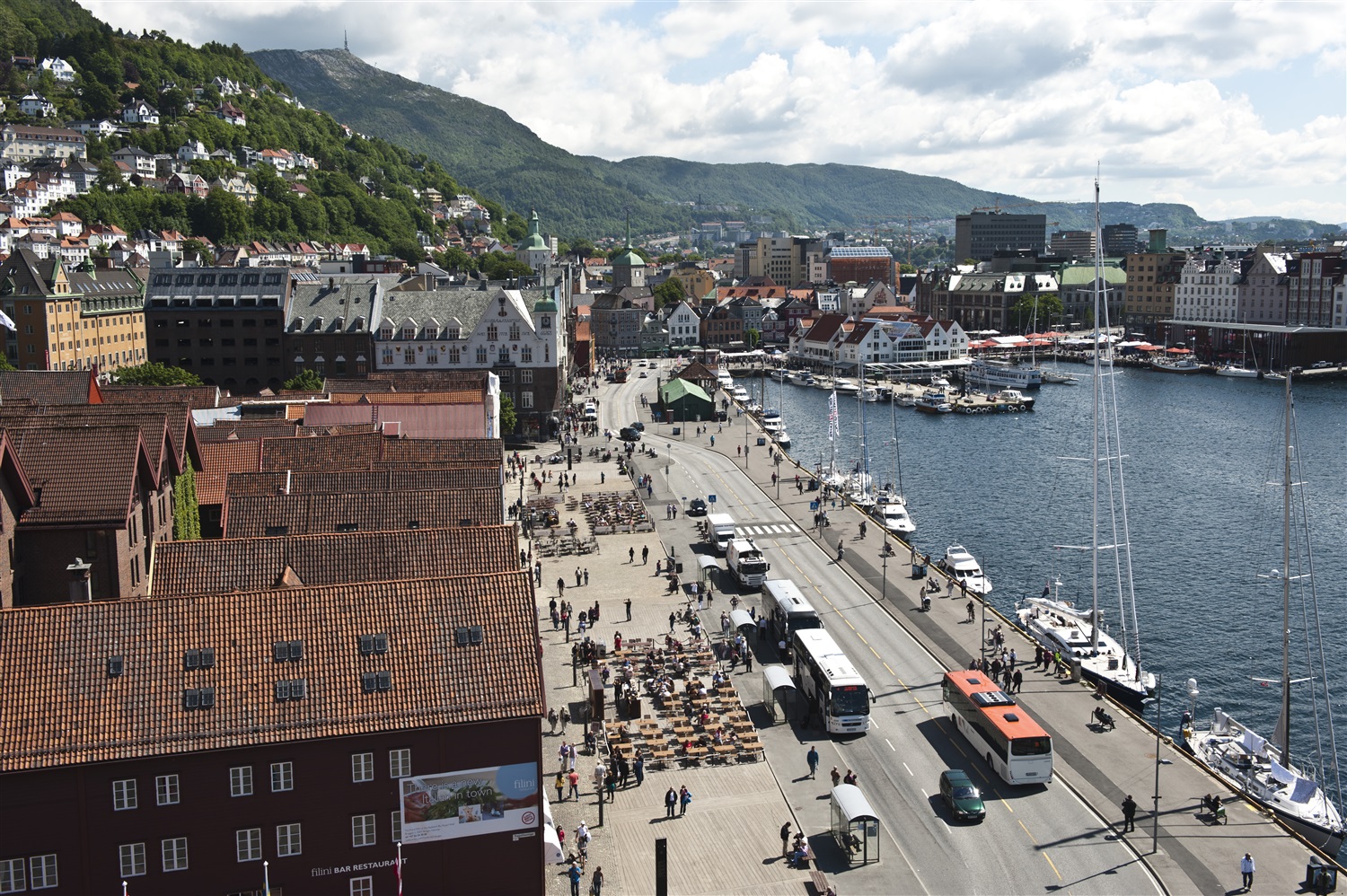
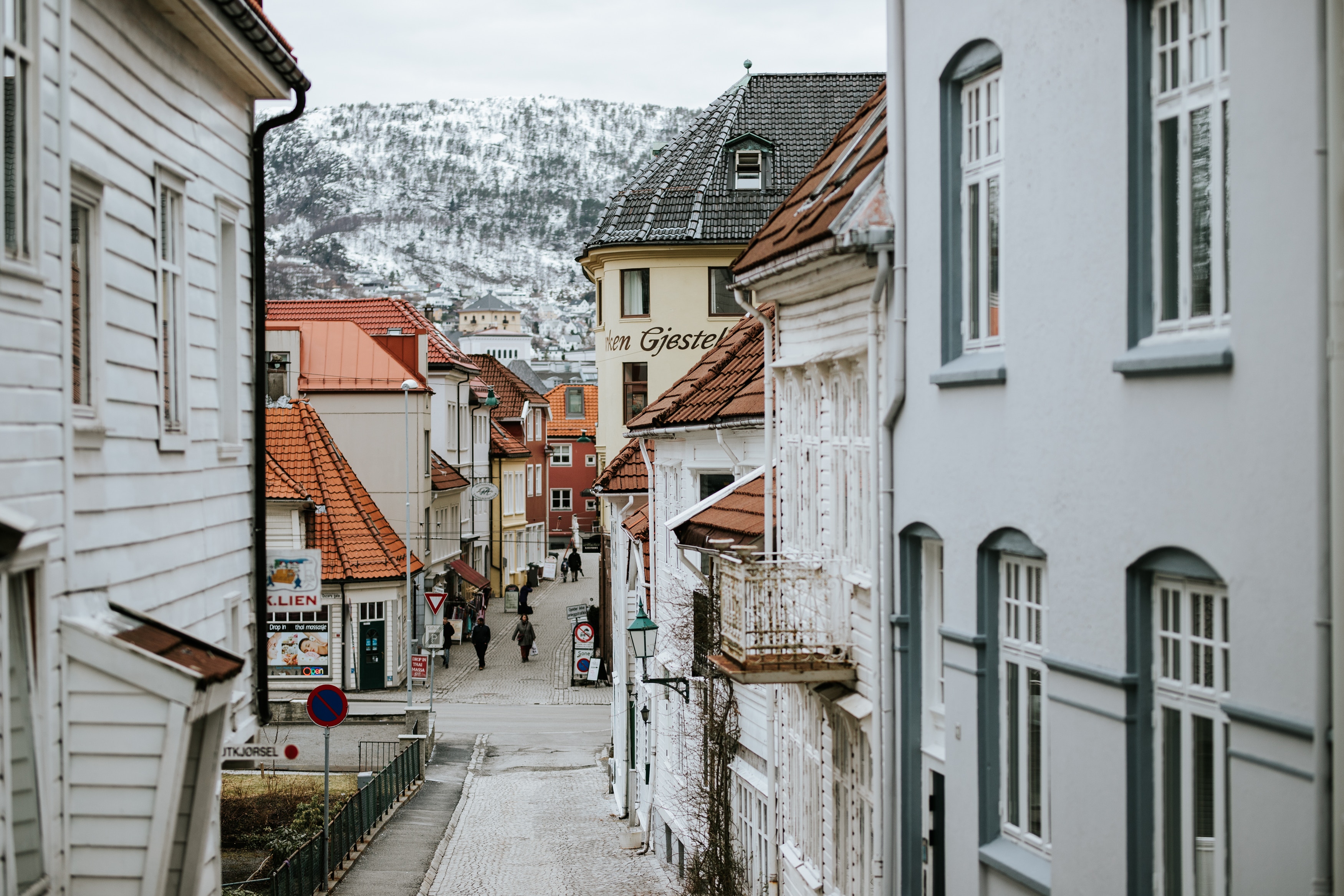
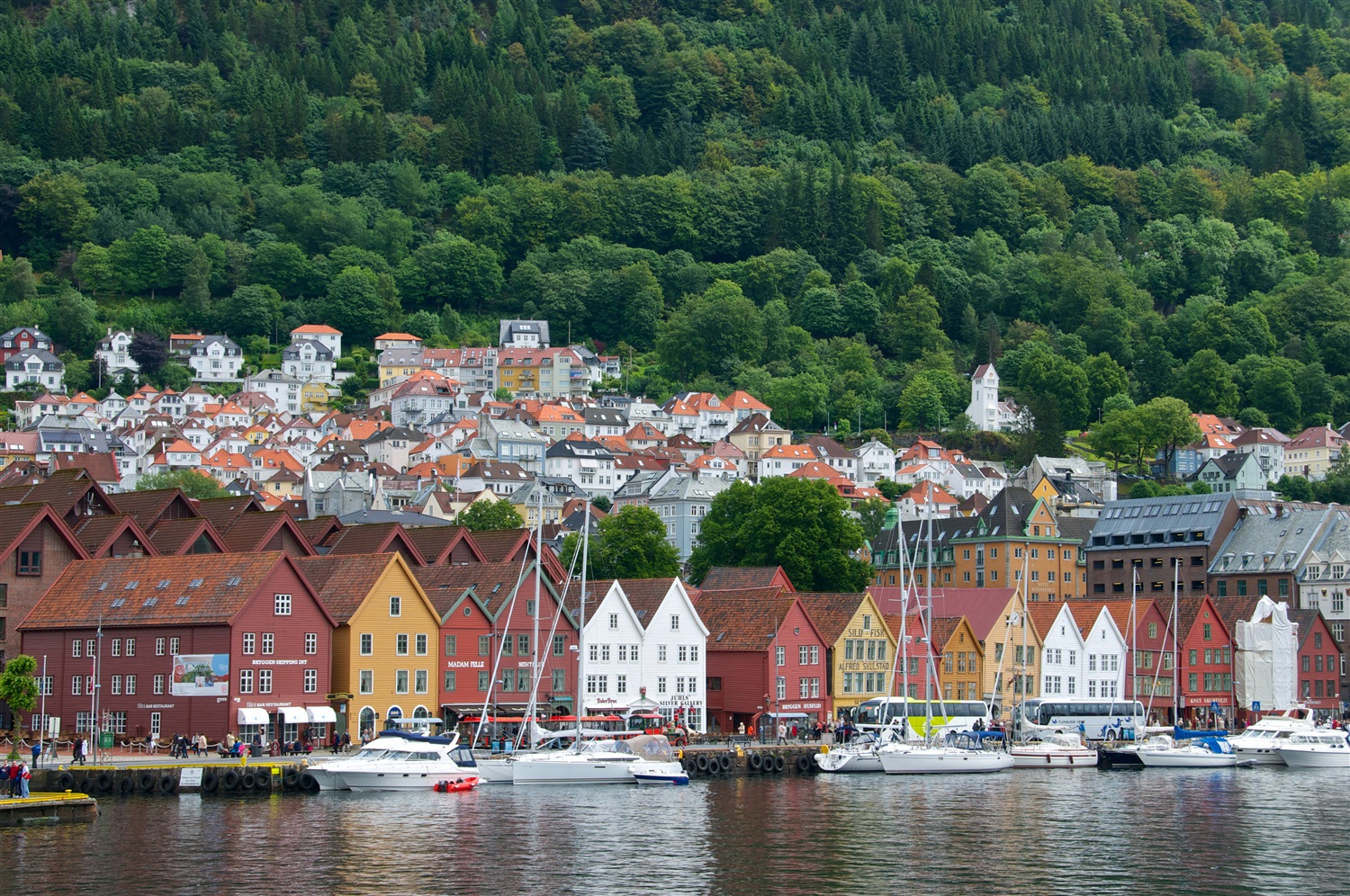
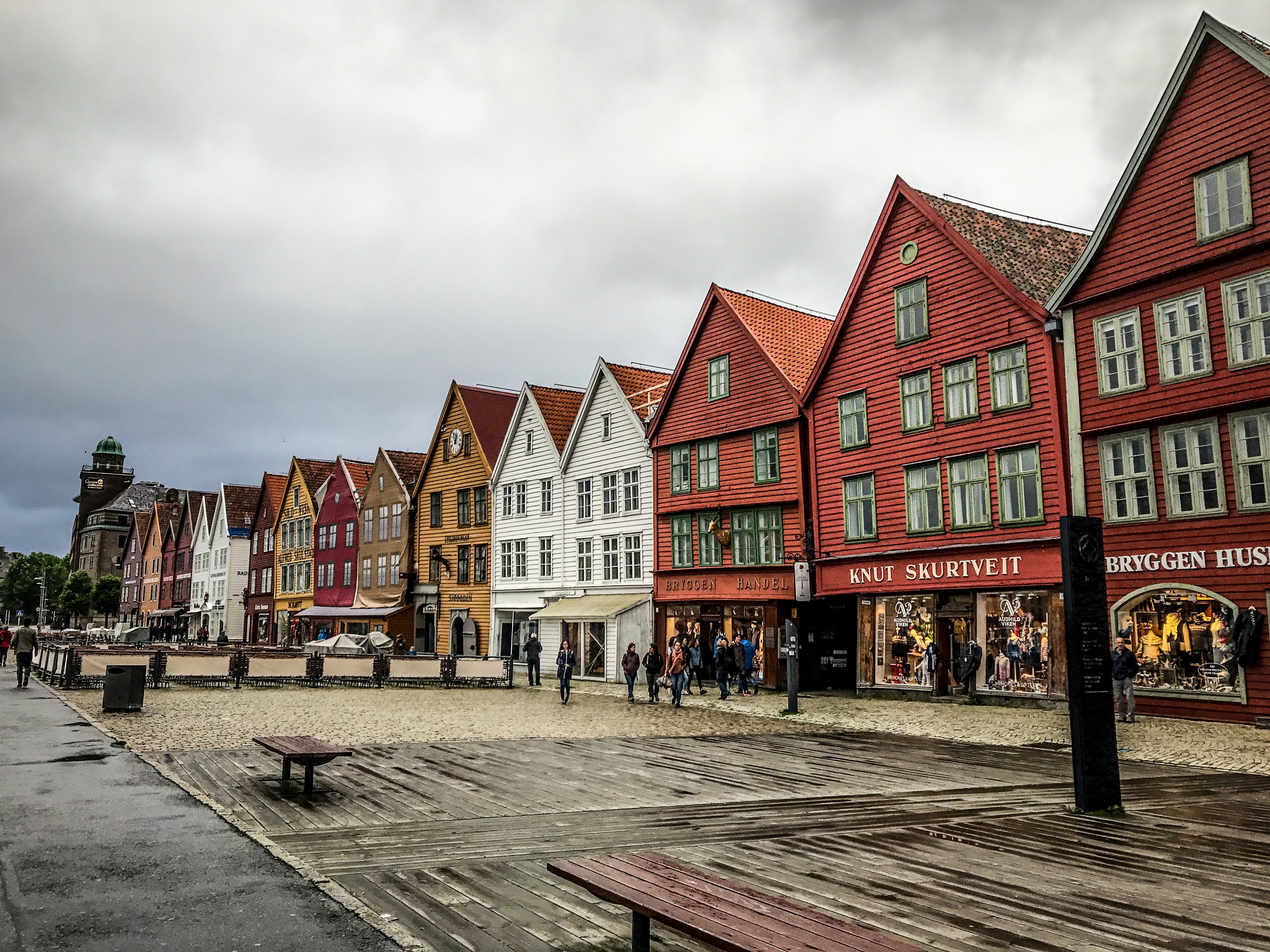
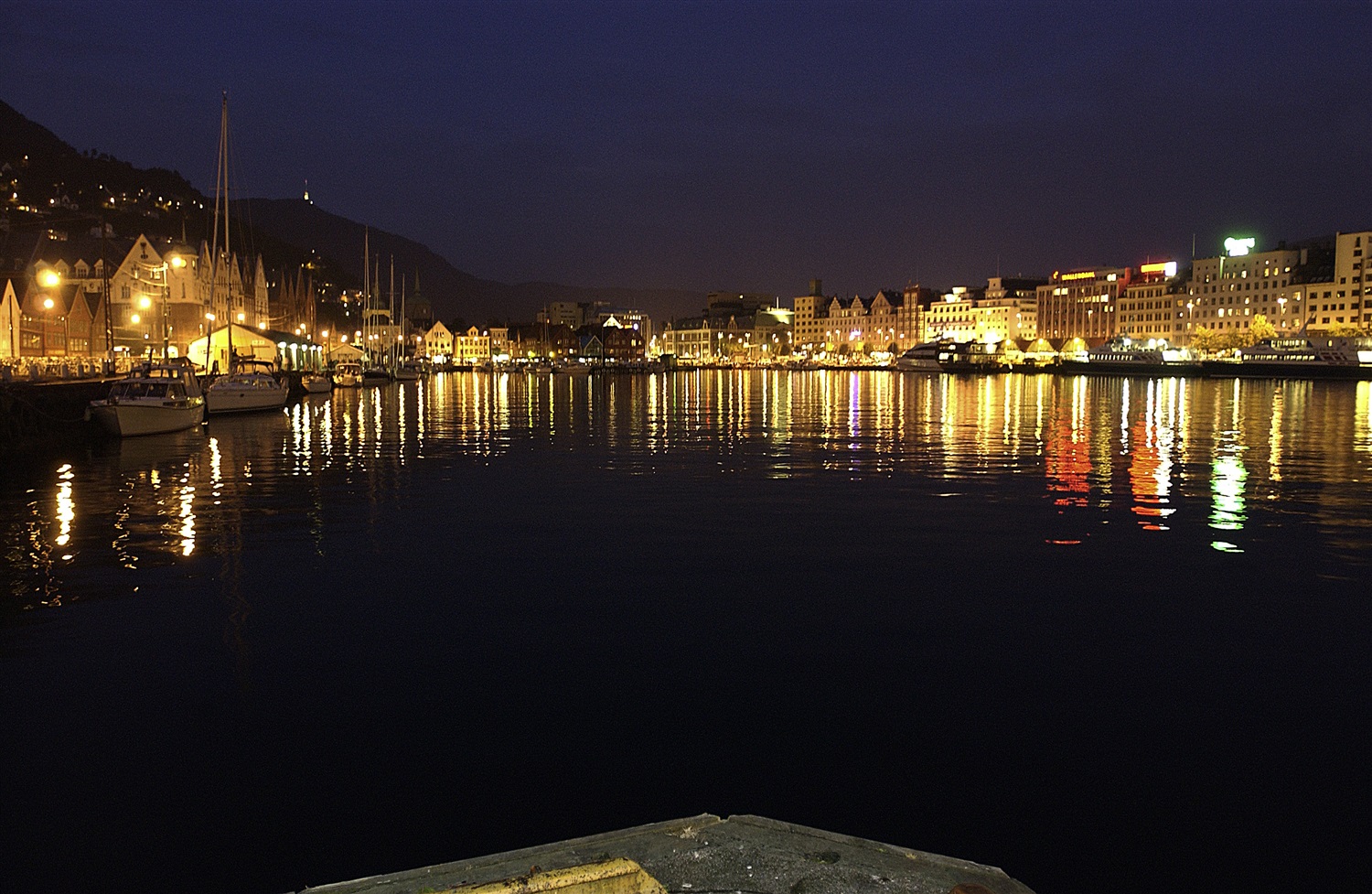
About Ålesund
The coastal town of Ålesund is the commercial capital of the Møre og Romsdal district. But more important, it is noted for its characteristic Jugendstil (Art Nouveau) buildings, which some claim make Ålesund one of the most beautiful towns in Norway. This Art Nouveau style emerged when the town was completely rebuilt after a devastating fire in 1904 destroyed nearly 800 buildings and left 10,000 residents homeless. It is said that the fire started by a tipped oil lamp. Rebuilding was carried out with the help of many young, foreign architects who added their own flourishes to the architectural blend of German Jugendstil and Viking roots. Today, narrow streets are crammed with buildings topped with turrets, spires and gables that bear decorations of dragonheads and curlicues. As one of the few remaining Art Nouveau towns in the world, in 1998 Ålesund was awarded the coveted Houens National Memorial Prize for the preservation of its unique architecture.
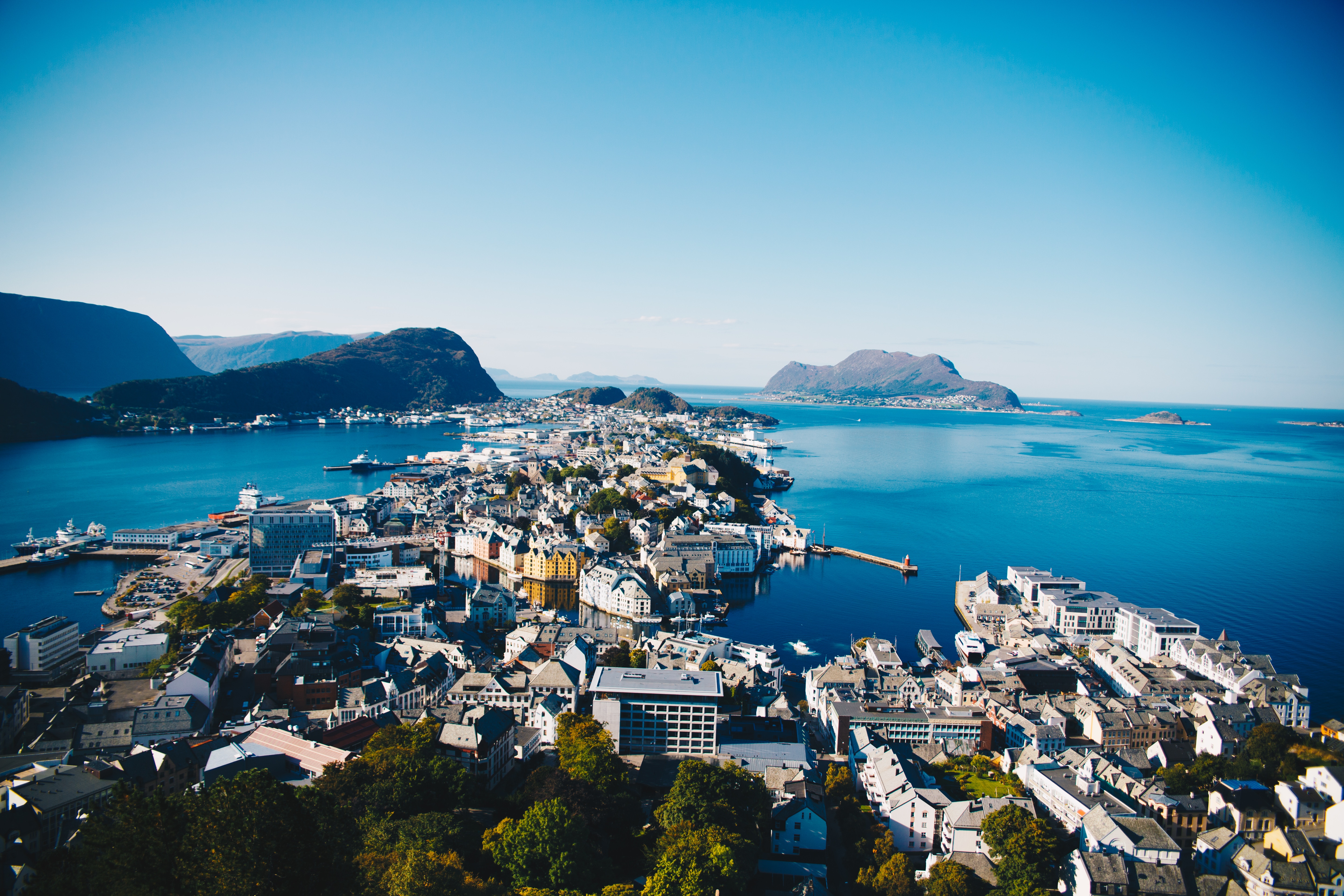
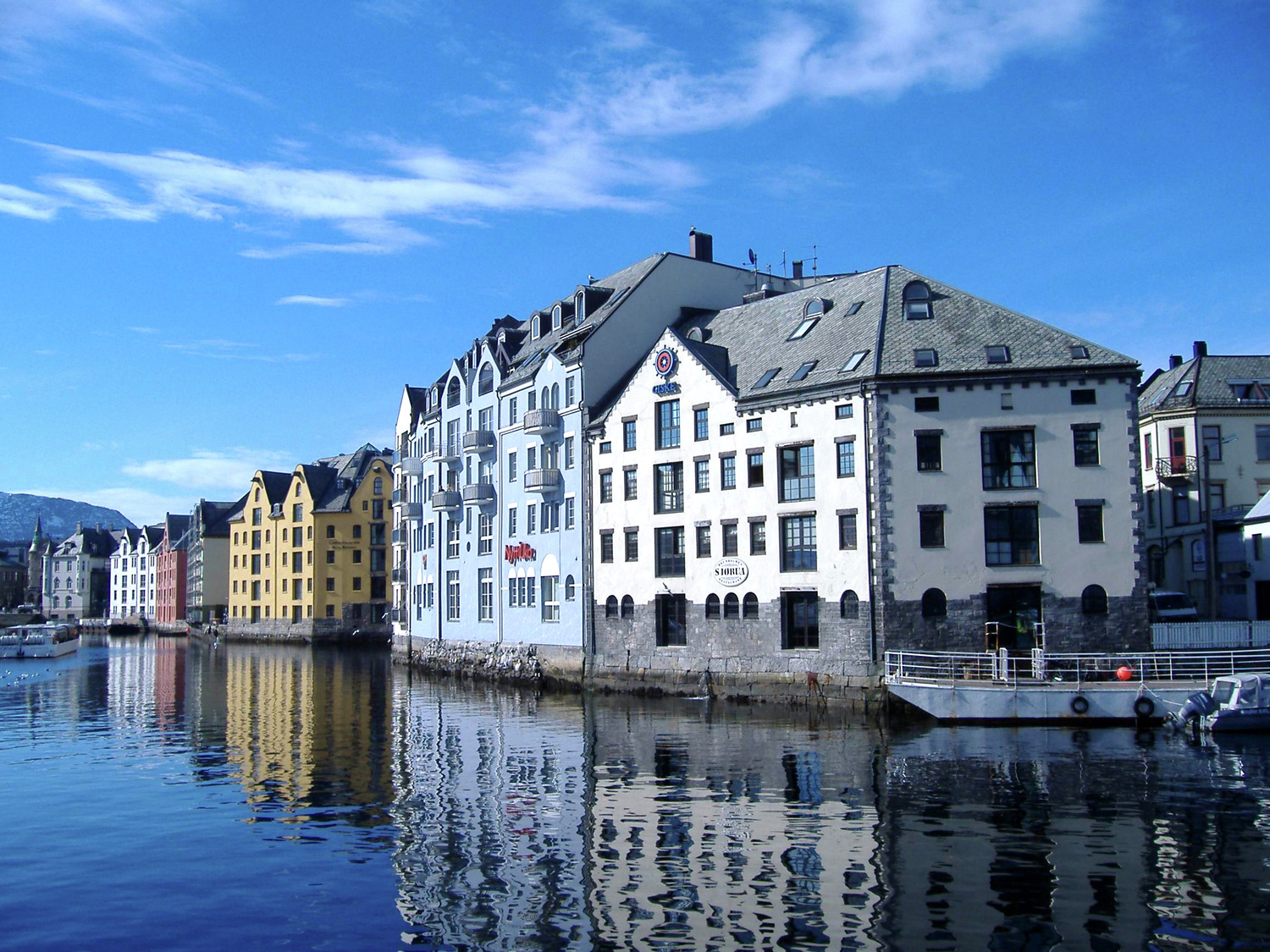
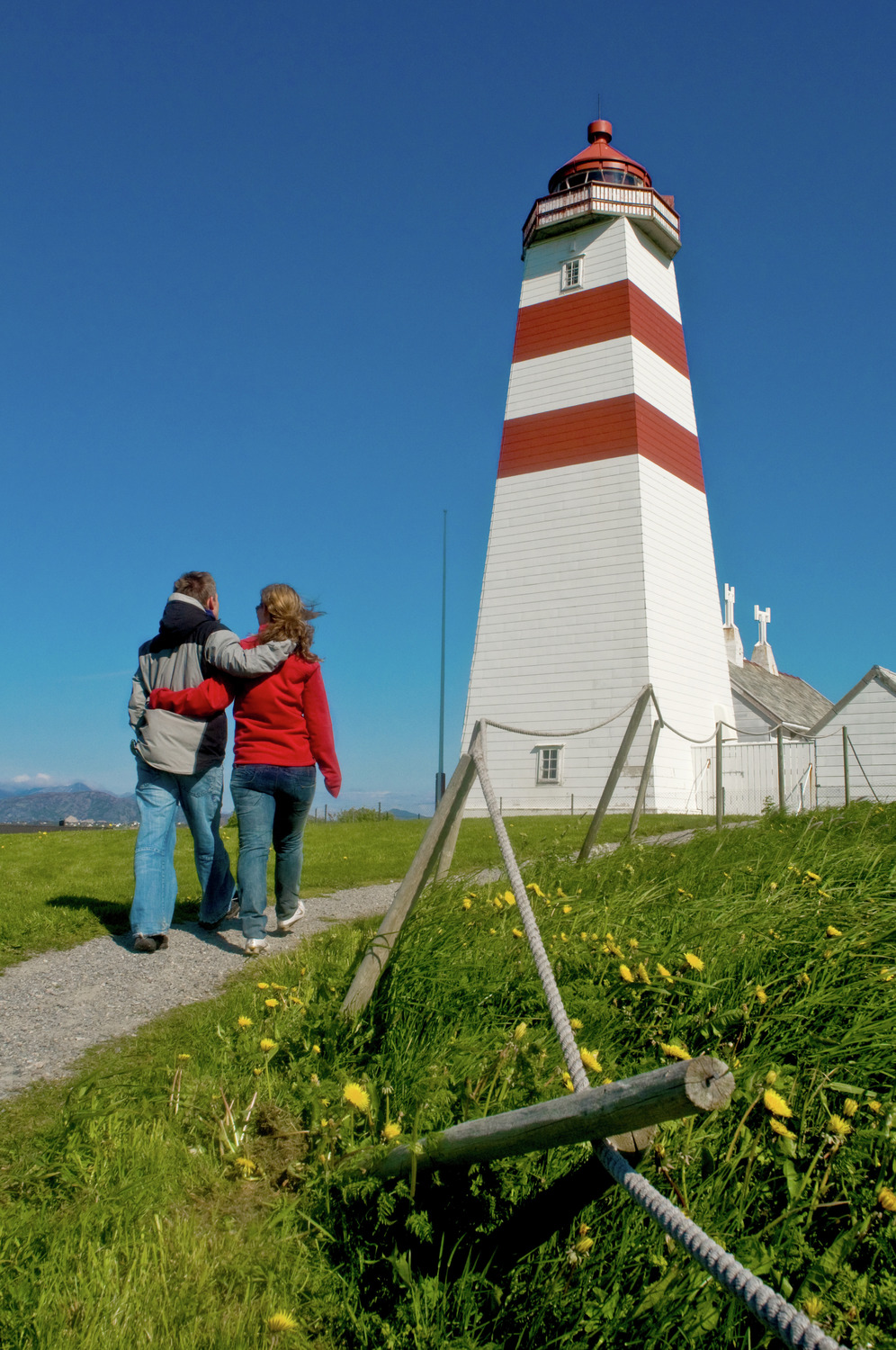

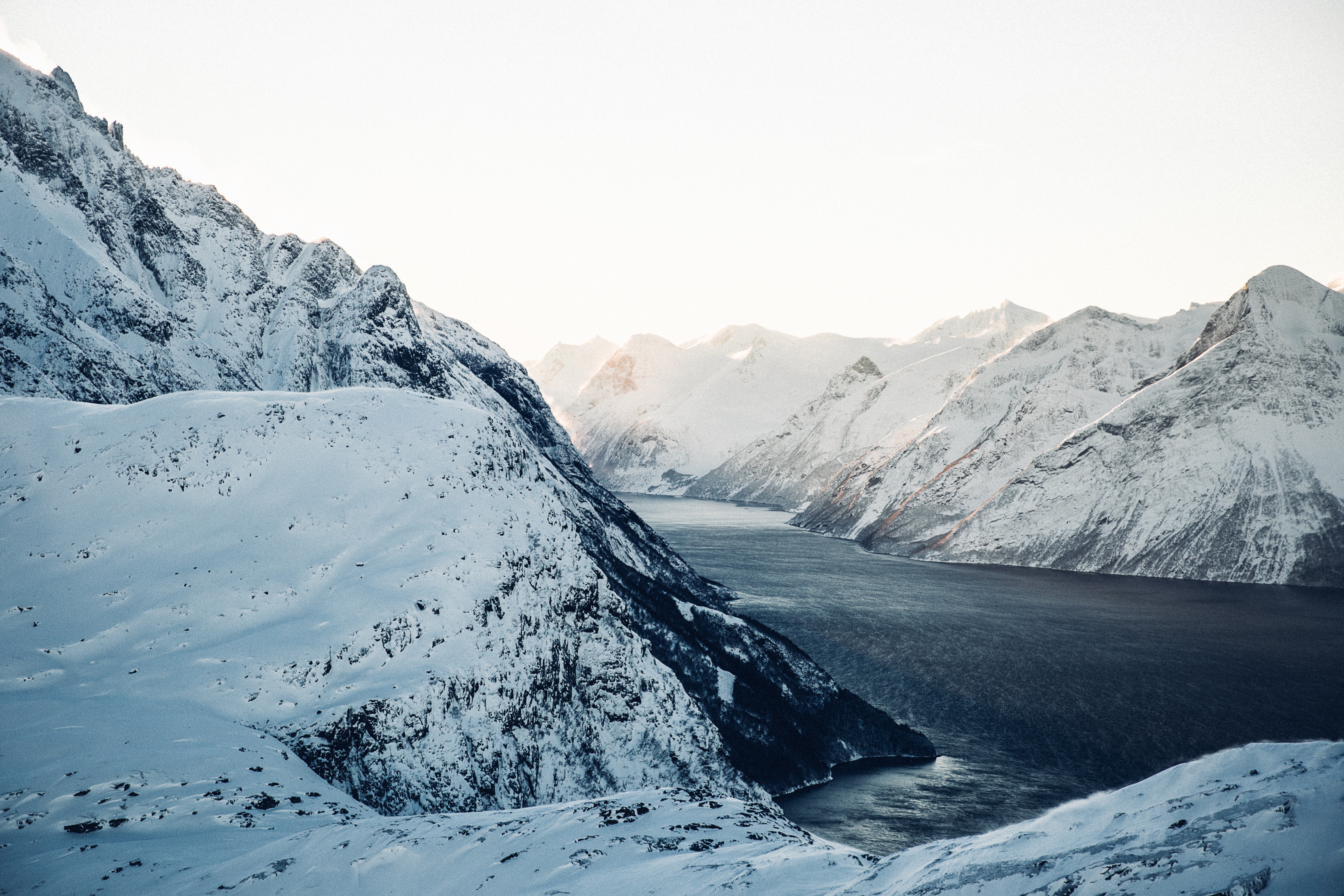
About Akureyri
Akureyri, called the Capital of the North is the second largest urban area in Iceland, and a lively one at that. Hemmed by the 60-km (37-mile) long Eyjafjörður, Akureyri is sheltered from the ocean winds and embraced by mountains on three sides. Late 19th-century wooden houses impart a sense of history, and the twin spires of a modern Lutheran church rising on a green hill near the waterfront, provide a focal point. To the south of Akureyri is the pyramid-shape rhyolite mountain Súlur. Beyond it is Kerling, the highest peak in Eyjafjörður District.
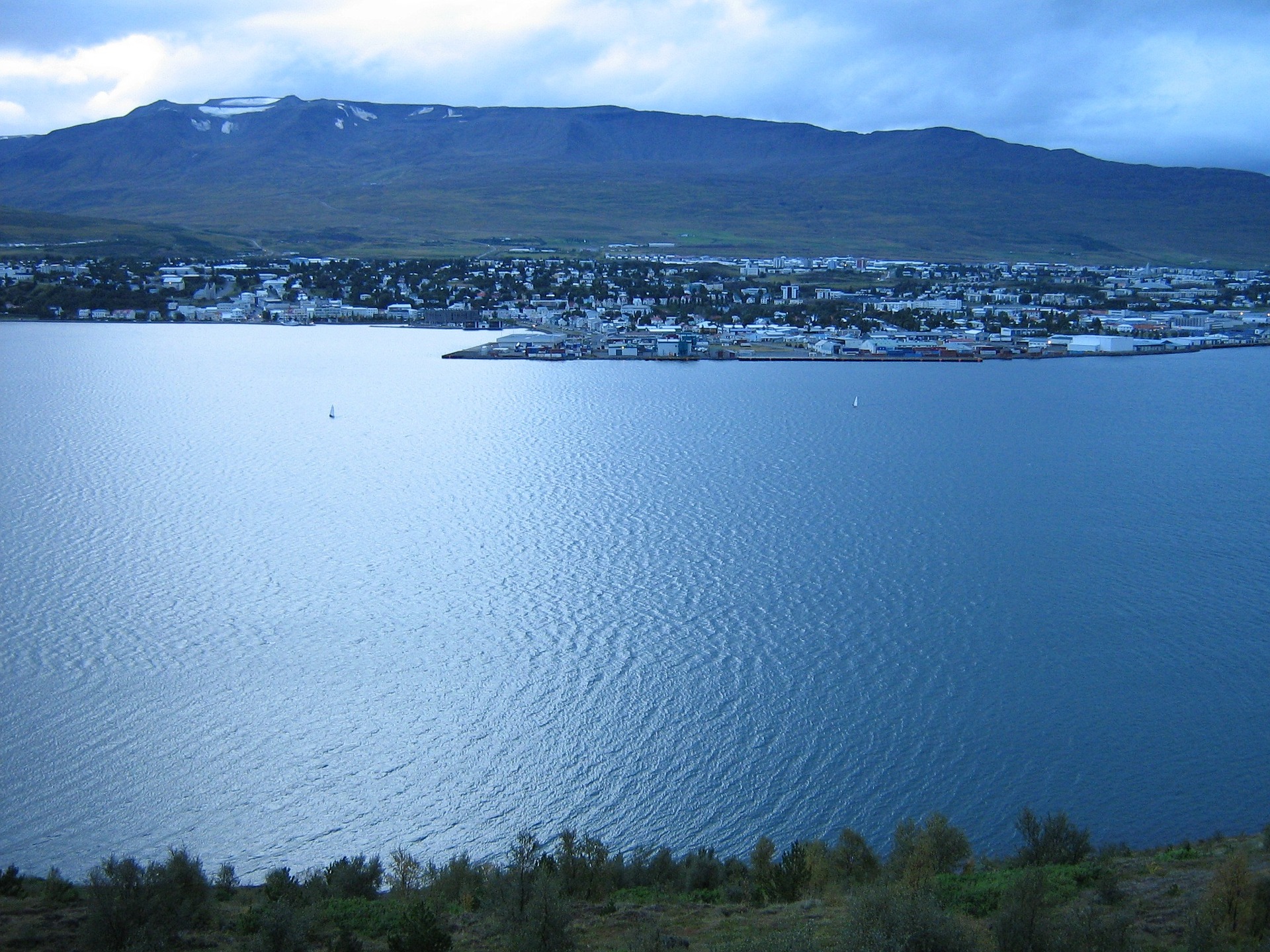
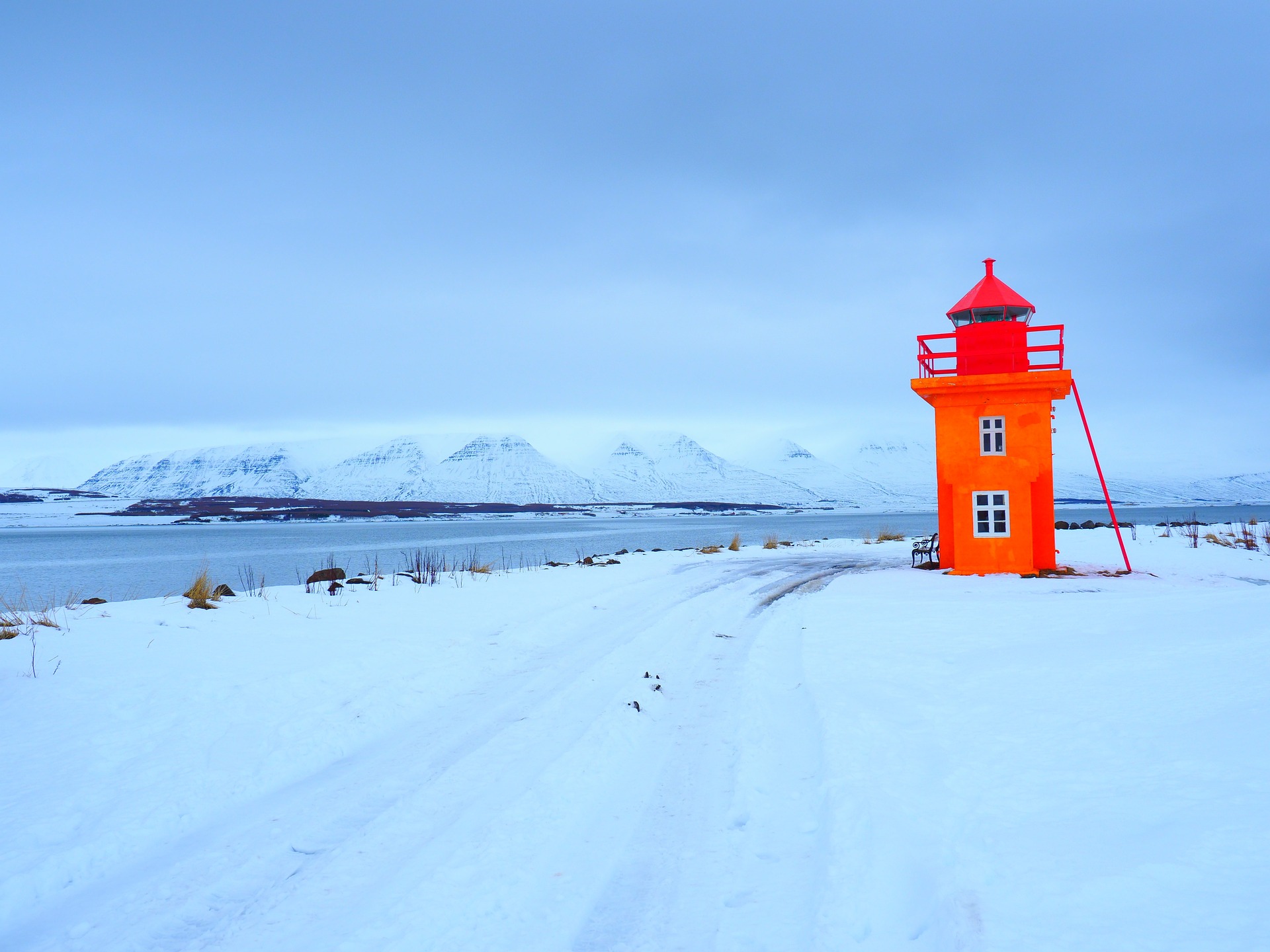
About Isafjørdur
Two colossal terraces of sheer rock stand either side of this extraordinarily located town - which rides a jutting spit onto an immensity of black fjord water. Surprisingly, considering the remoteness of its location and its compact size, Isafjordur is a modern and lively place to visit, offering a great choice of cafes and delicious restaurants – which are well stocked to impress visitors. The town is a perfectly located base for adventures amongst Iceland's fantastic wilderness - with skiing, hiking and water-sports popular pursuits among visitors.
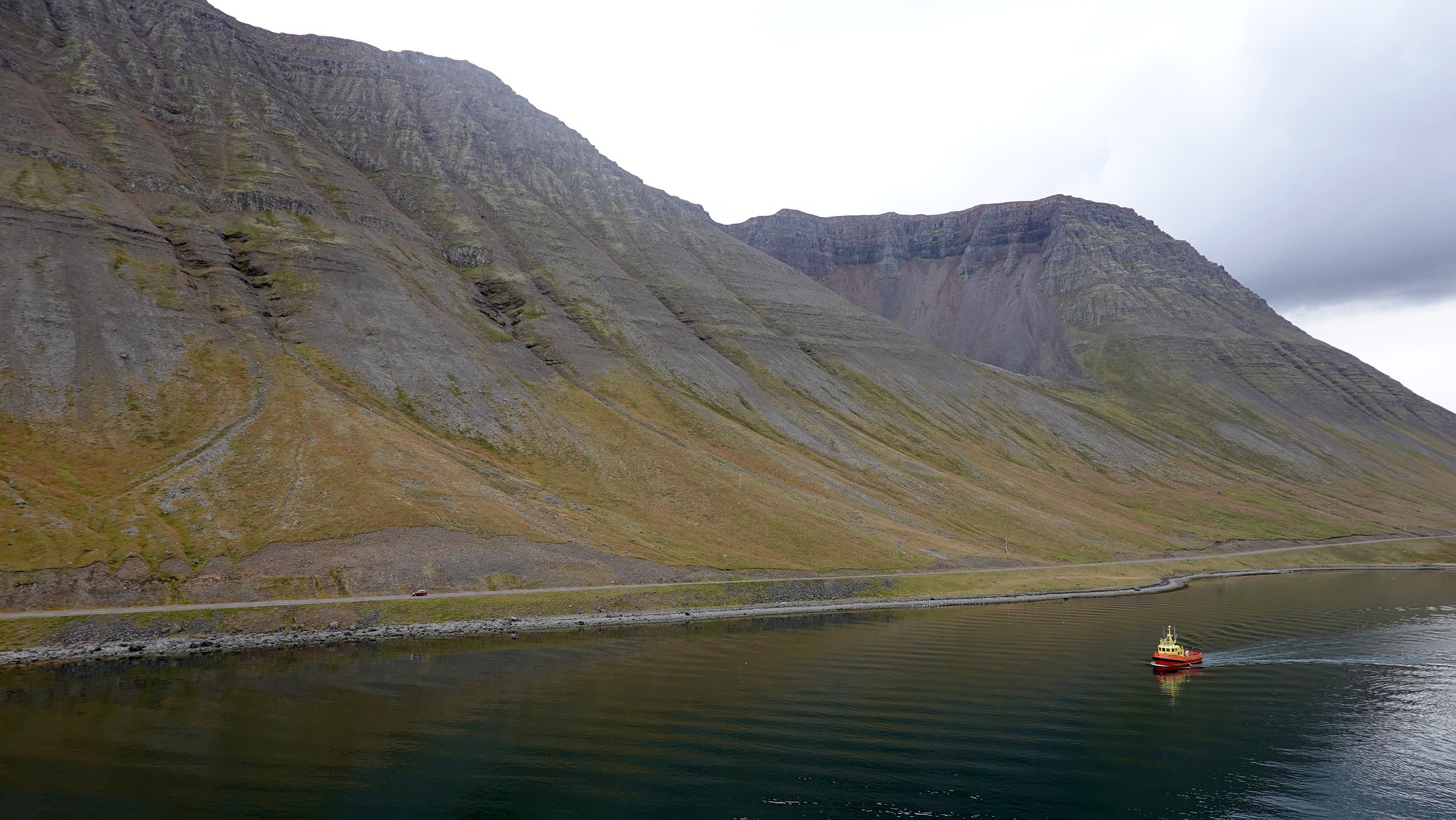
About Reykjavík
Sprawling Reykjavík, the nation's nerve center and government seat, is home to half the island's population. On a bay overlooked by proud Mt. Esja (pronounced eh-shyuh), with its ever-changing hues, Reykjavík presents a colorful sight, its concrete houses painted in light colors and topped by vibrant red, blue, and green roofs. In contrast to the almost treeless countryside, Reykjavík has many tall, native birches, rowans, and willows, as well as imported aspen, pines, and spruces.Reykjavík's name comes from the Icelandic words for smoke, reykur, and bay, vík. In AD 874, Norseman Ingólfur Arnarson saw Iceland rising out of the misty sea and came ashore at a bay eerily shrouded with plumes of steam from nearby hot springs. Today most of the houses in Reykjavík are heated by near-boiling water from the hot springs. Natural heating avoids air pollution; there's no smoke around. You may notice, however, that the hot water brings a slight sulfur smell to the bathroom.Prices are easily on a par with other major European cities. A practical option is to purchase a Reykjavík City Card at the Tourist Information Center or at the Reykjavík Youth Hostel. This card permits unlimited bus usage and admission to any of the city's seven pools, the Family Park and Zoo, and city museums. The cards are valid for one (ISK 3,300), two (ISK 4,400), or three days (ISK 4,900), and they pay for themselves after three or four uses a day. Even lacking the City Card, paying admission (ISK 500, or ISK 250 for seniors and people with disabilities) to one of the city art museums (Hafnarhús, Kjarvalsstaðir, or Ásmundarsafn) gets you free same-day admission to the other two.
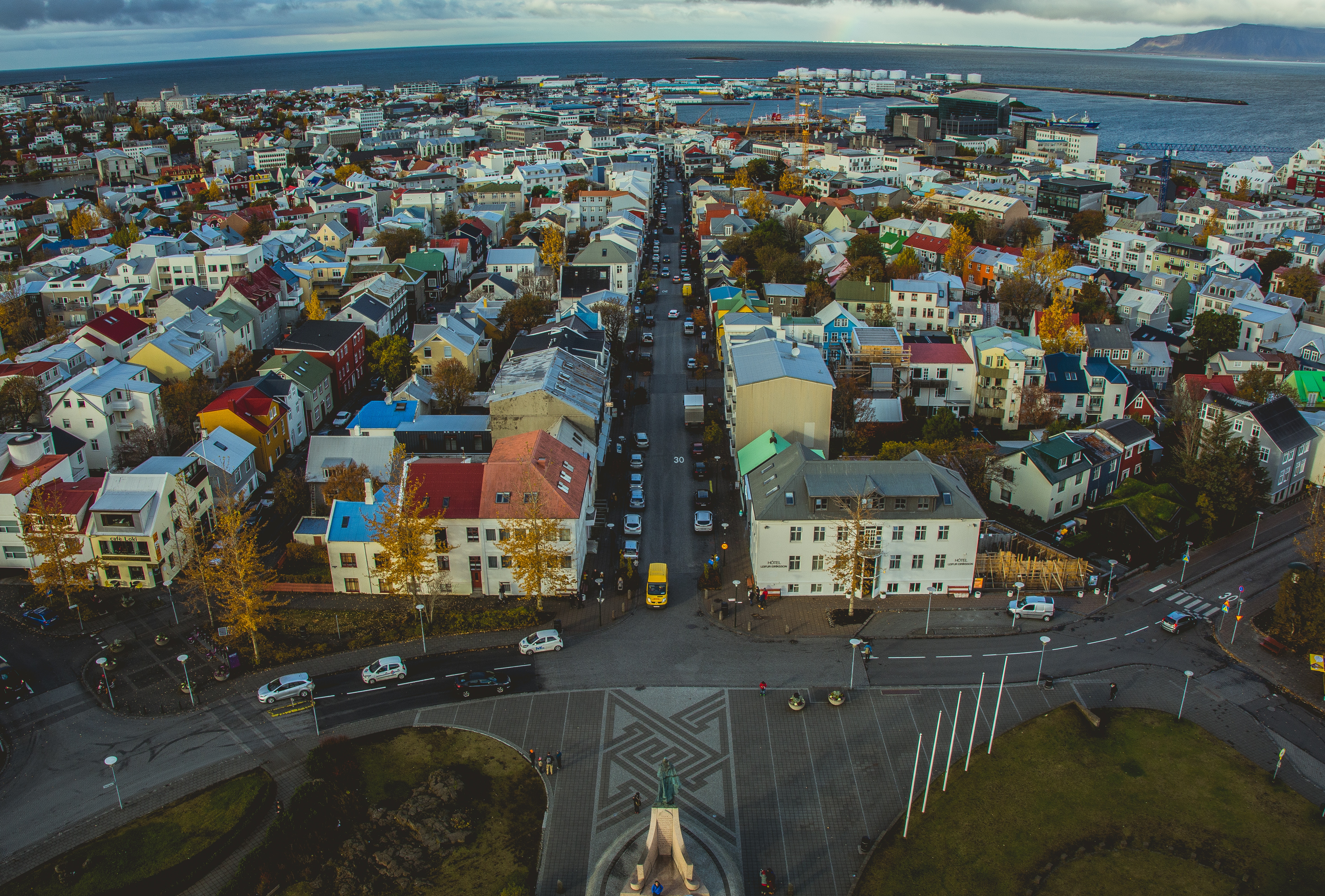
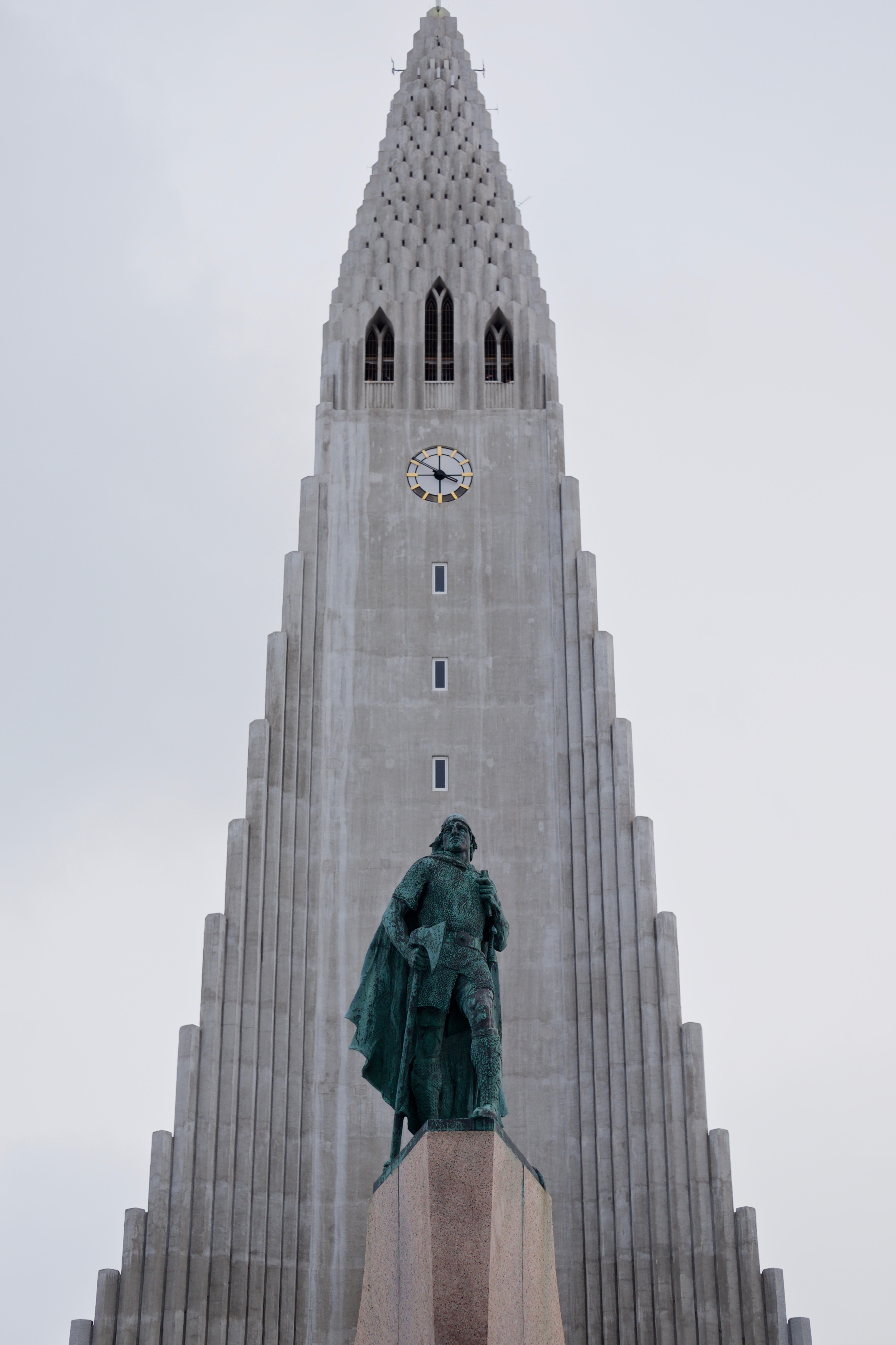
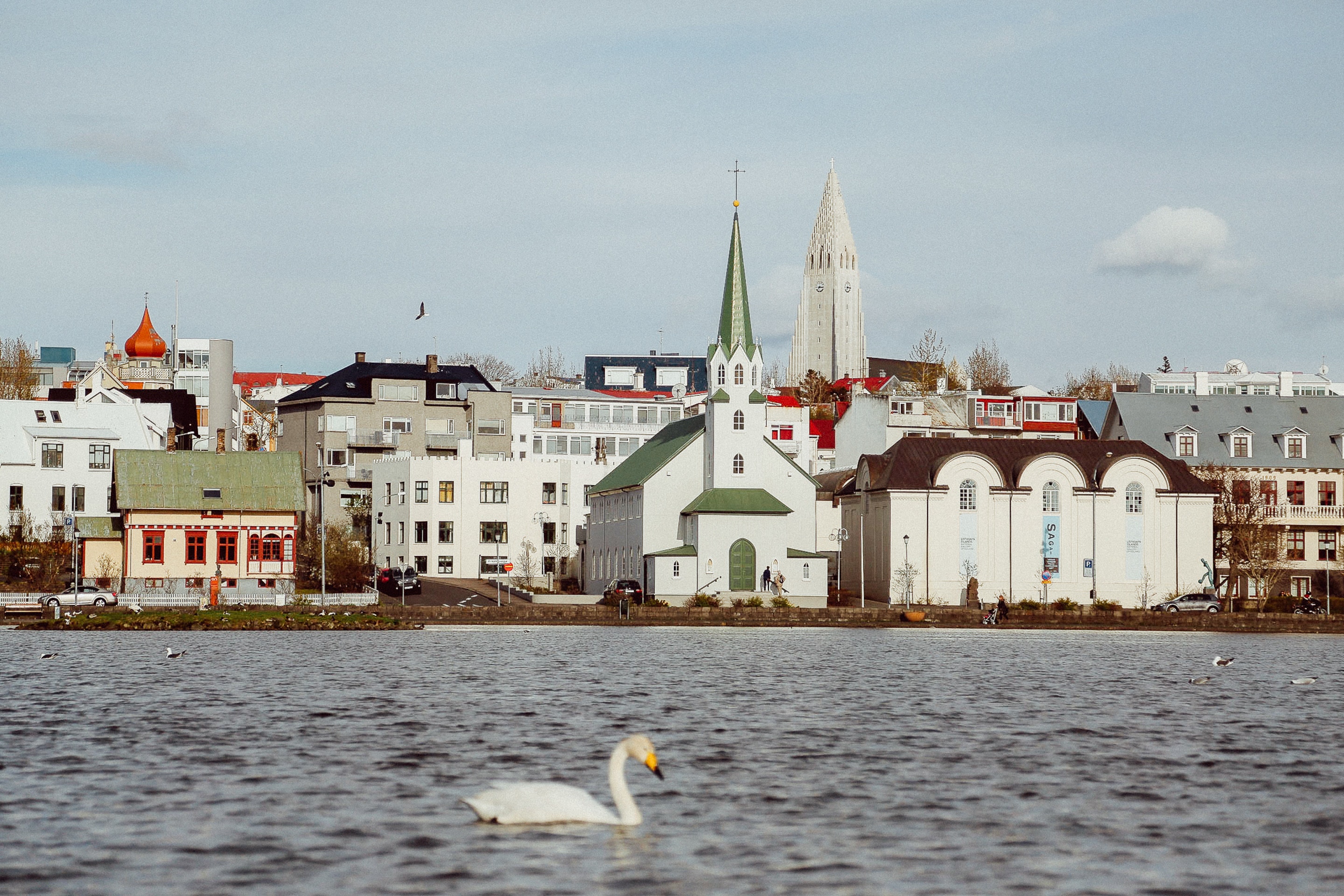
About Heimaey Island
It’s hard to imagine, as you stroll Heimaey’s idyllic streets of white wooden houses, that this island was literally torn apart by a spectacular volcanic eruption, just over 40 years ago. The fact that you can visit incredible Heimaey at all is something of a miracle – because the oozing lava of the Eldfell volcano threatened to seal the harbour off completely. Fortunately, its advance was halted by gallons of seawater, pumped onto it by the plucky islanders, who saved their fishing industry in the process. Iceland's famous for its scenery, and the huge castles of volcanic rock that rise out of the sea's waves here are some of the country's most dramatic.
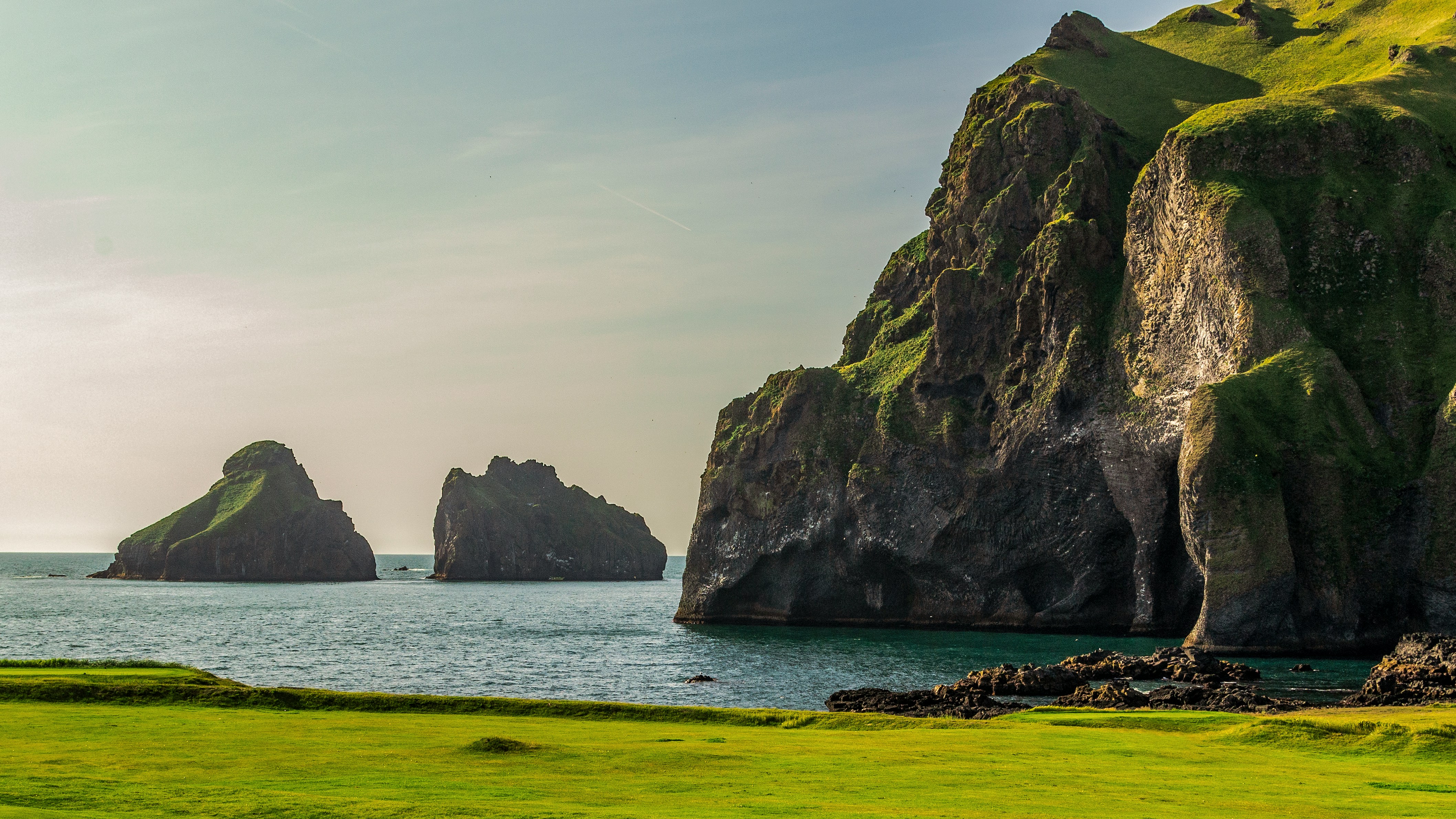
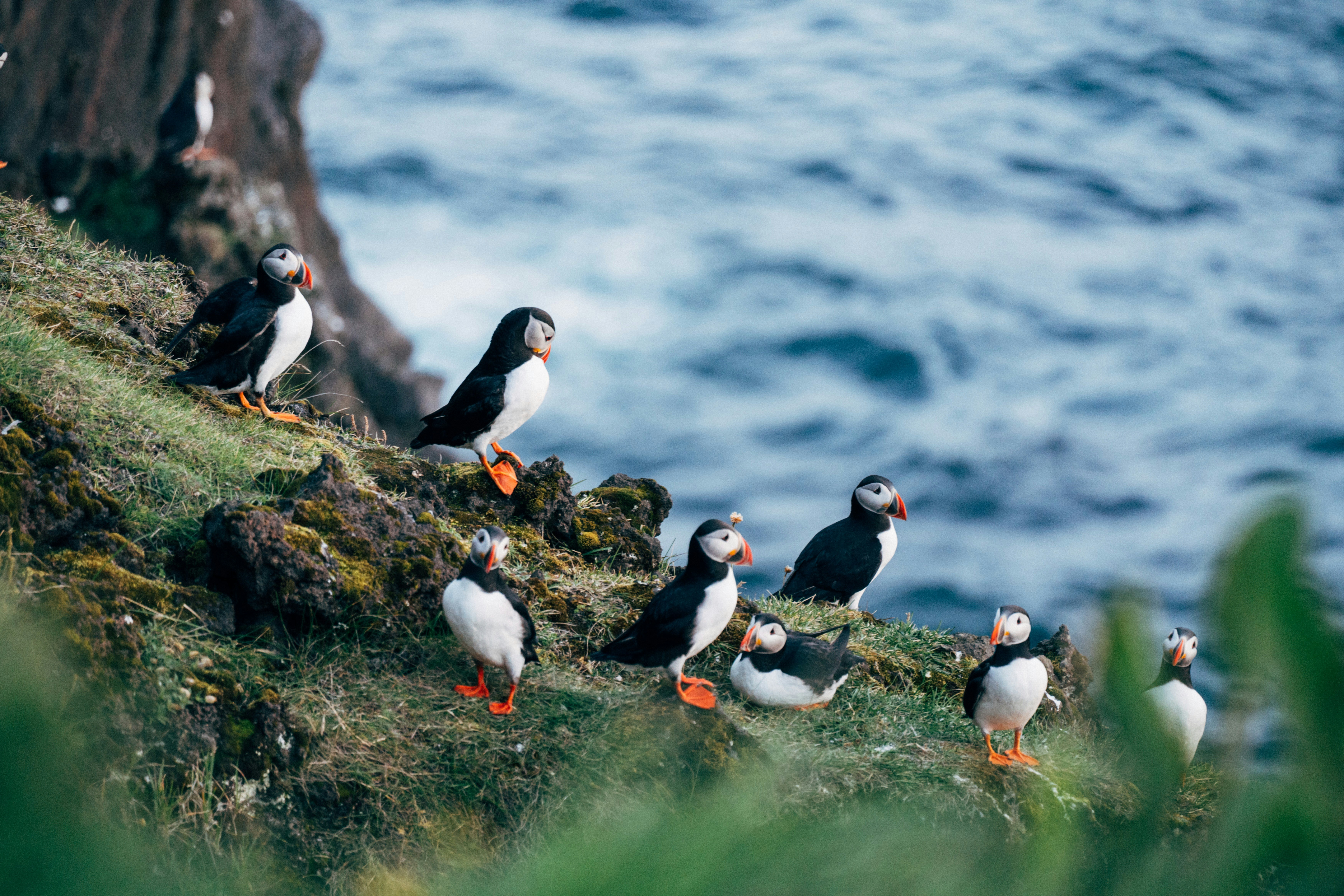
About Kirkwall, Orkney Islands
In bustling Kirkwall, the main town on Orkney, there's plenty to see in the narrow, winding streets extending from the harbor. The cathedral and some museums are highlights.
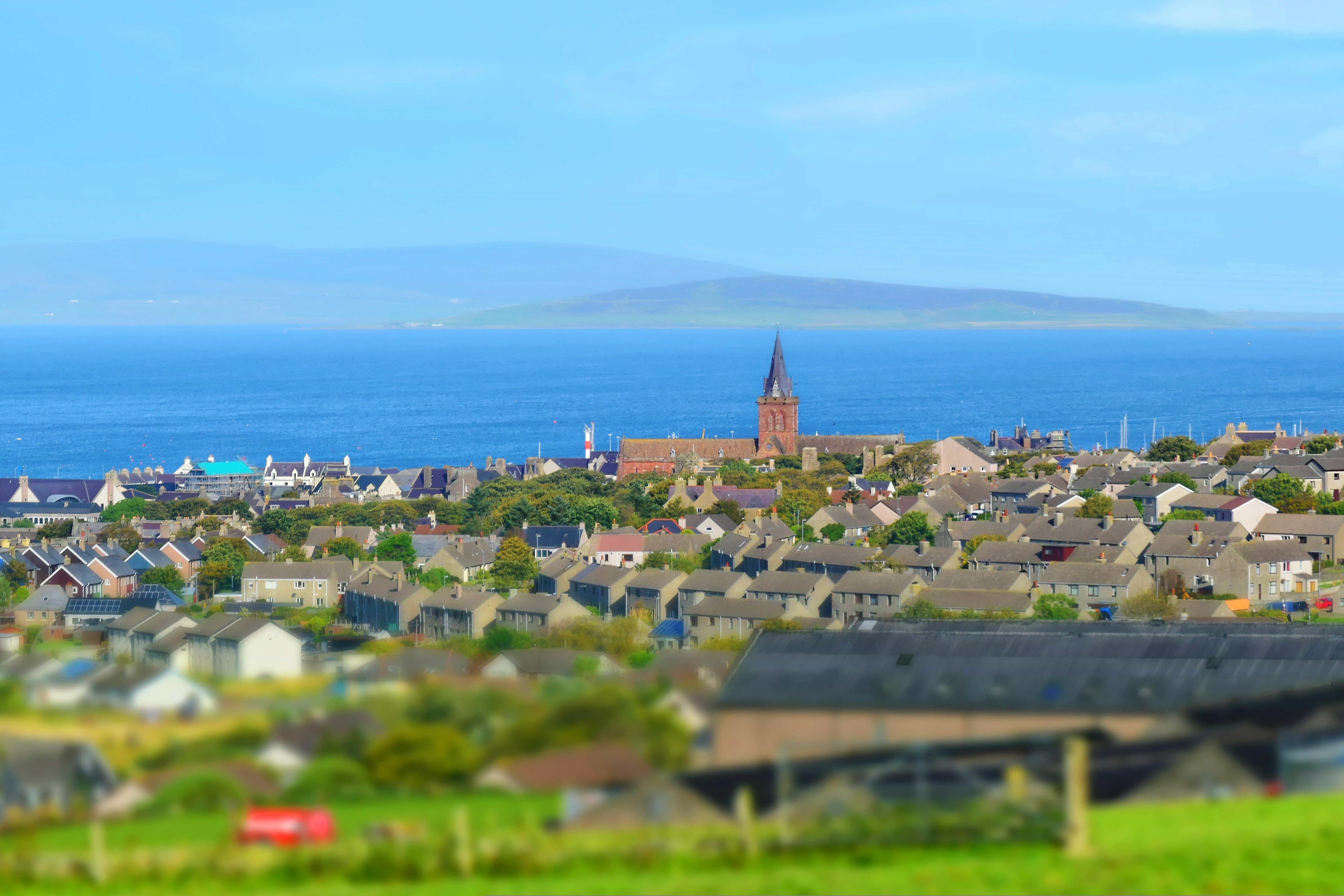
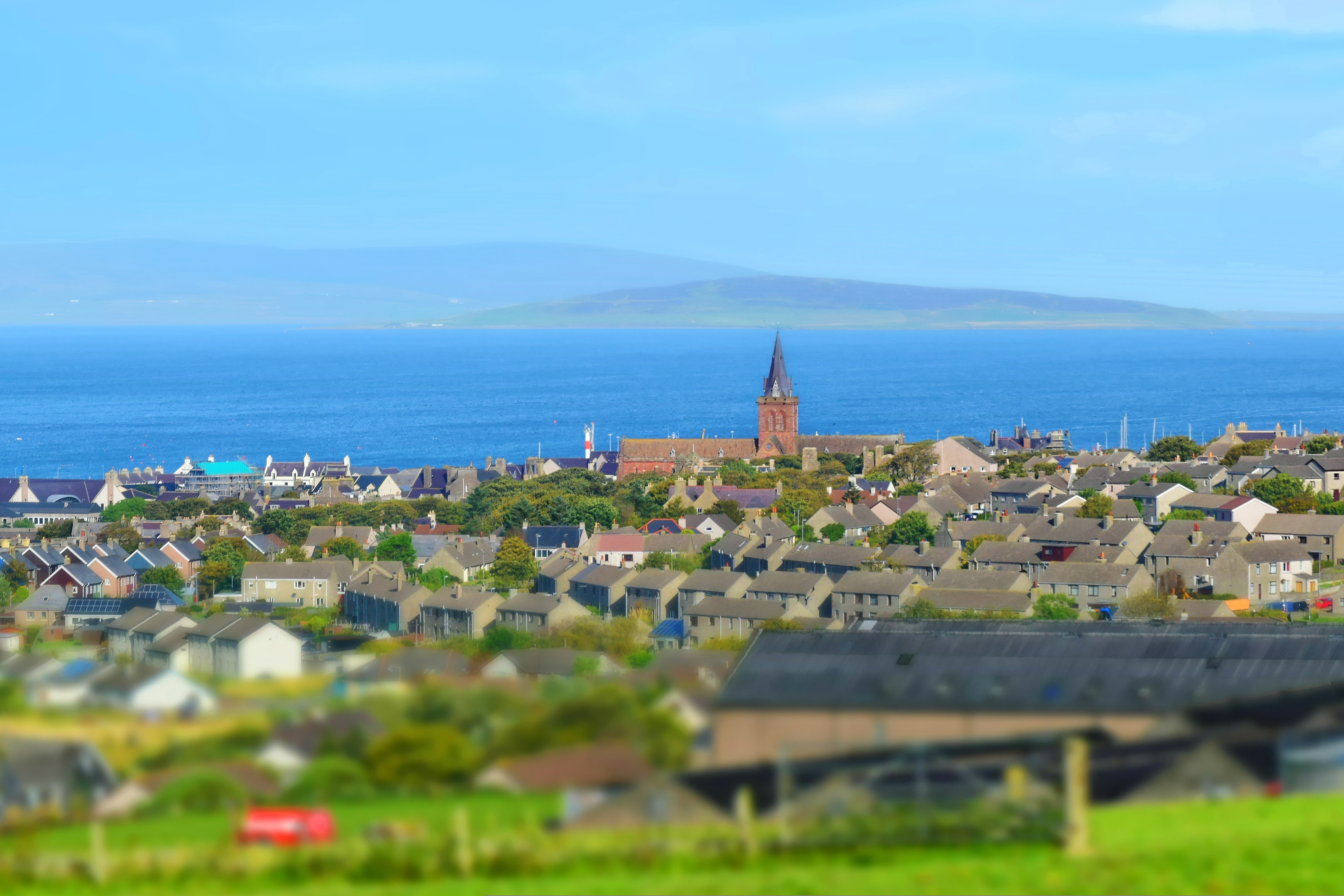
About Newhaven/Edinburgh
Newhaven is a district in the City of Edinburgh, Scotland, between Leith and Granton and about 2 miles north of the city centre, just north of the Victoria Park district. Formerly a village and harbour on the Firth of Forth.
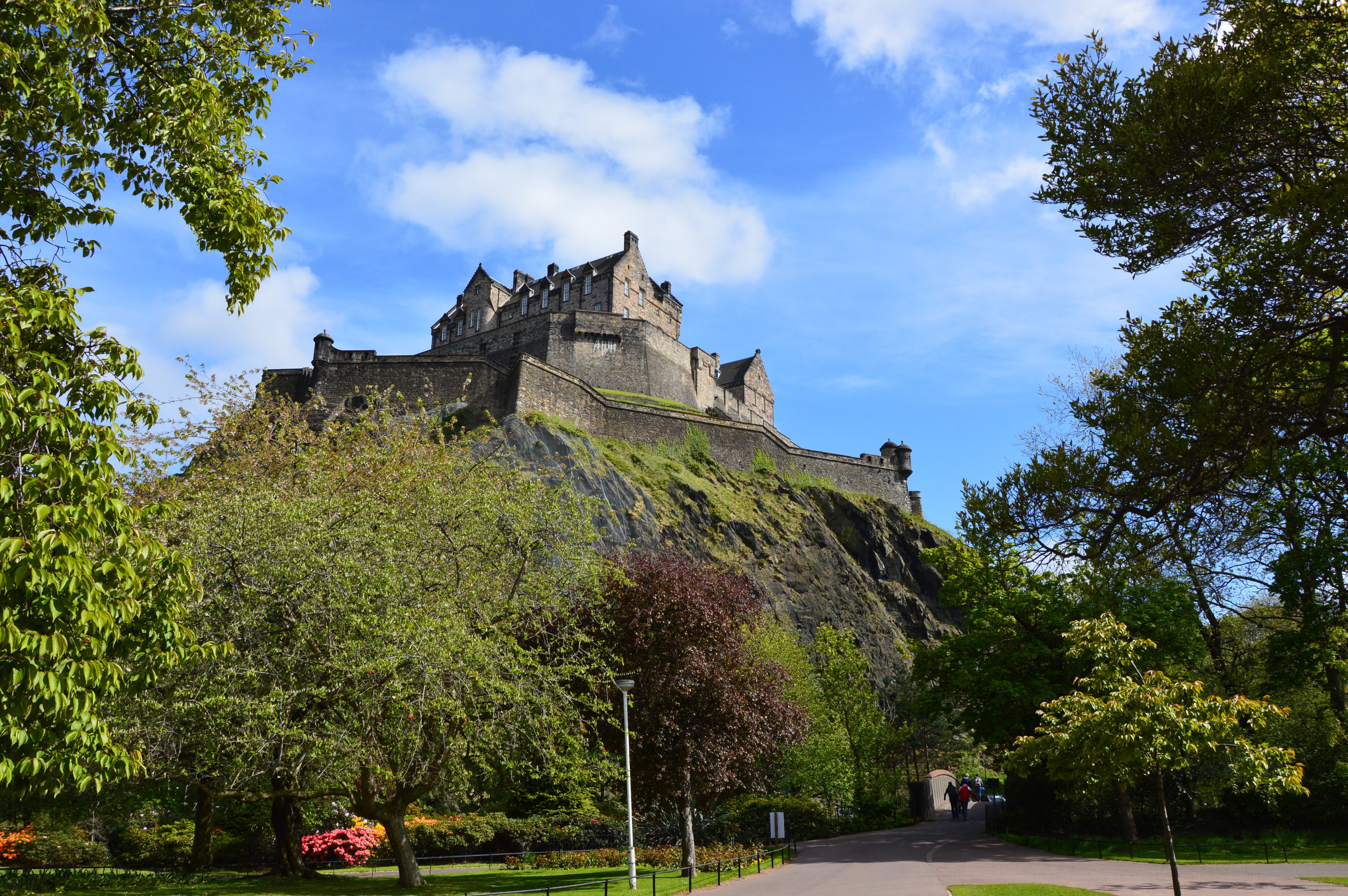
About Hamburg
Hamburg is Germany’s second-largest city with a history dating back to Charlemagne. A major port, this vibrant city is home to art and culture, extensive shopping facilities, Baroque buildings and waterfront vistas. With its well-known fish market, art galleries and Museums together with several beautiful parks including a botanical garden, this is a city with something for everyone. British visitors who remember the Swinging Sixties may like to visit the streets around Grosse Freiheit, where an unknown pop group called The Beatles gave their first public performances in various local clubs before achieving worldwide fame.




The Owner Suite is much more than our most exclusive suite, it is an exquisite residence on the seas of the world. Enjoy every conceivable amenity in over 114 square meters of personal freedom.
- Living area: 99 m²; veranda 15 m²
- Separate living and sleeping areas
- Separate dining table
- guest toilet
- bathroom with two sinks
- shower with steam sauna
- whirlpool and daybed in the bathroom area
- butler service
- Free minibar
- Exclusive service privileges (details experience)
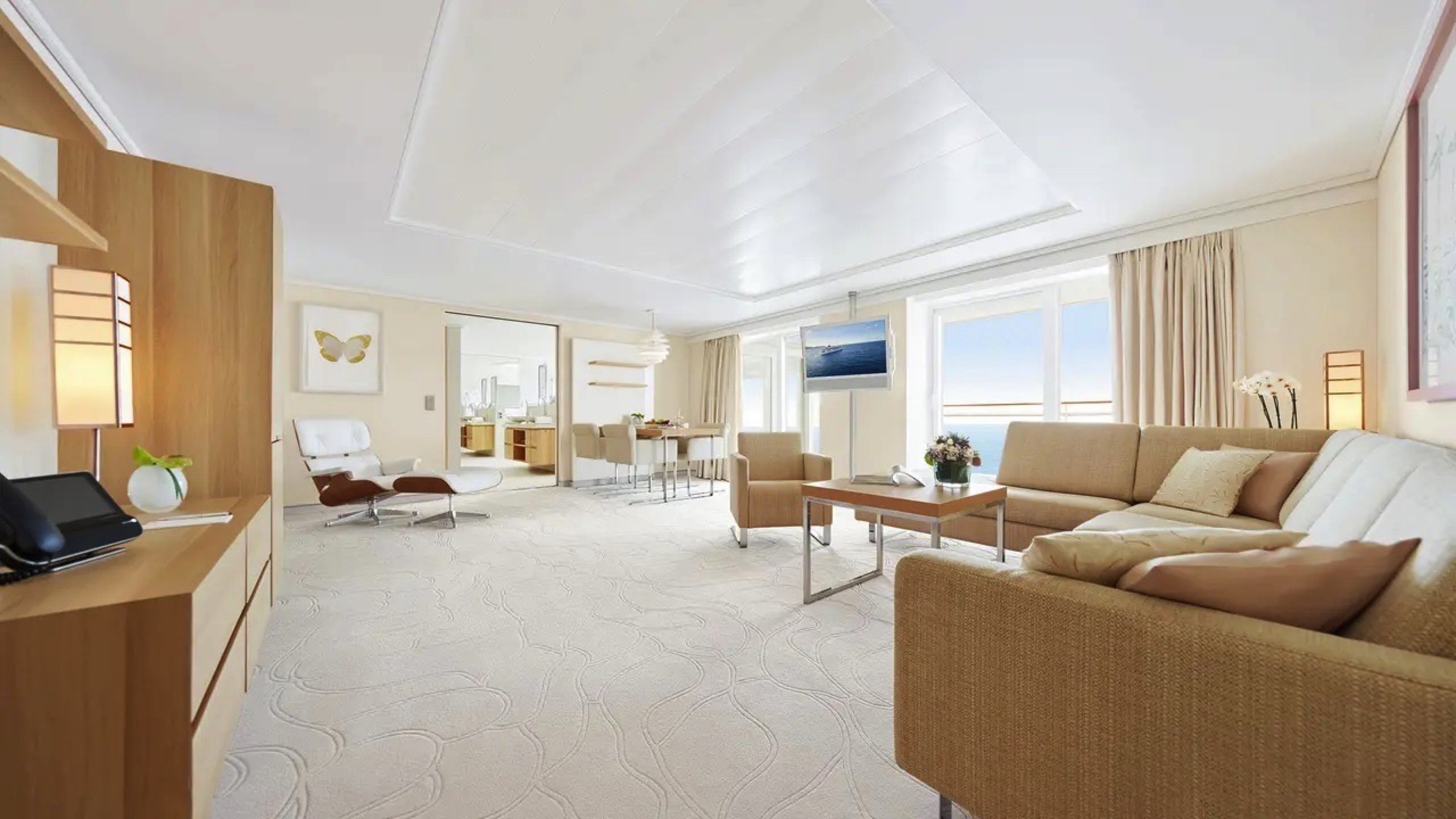
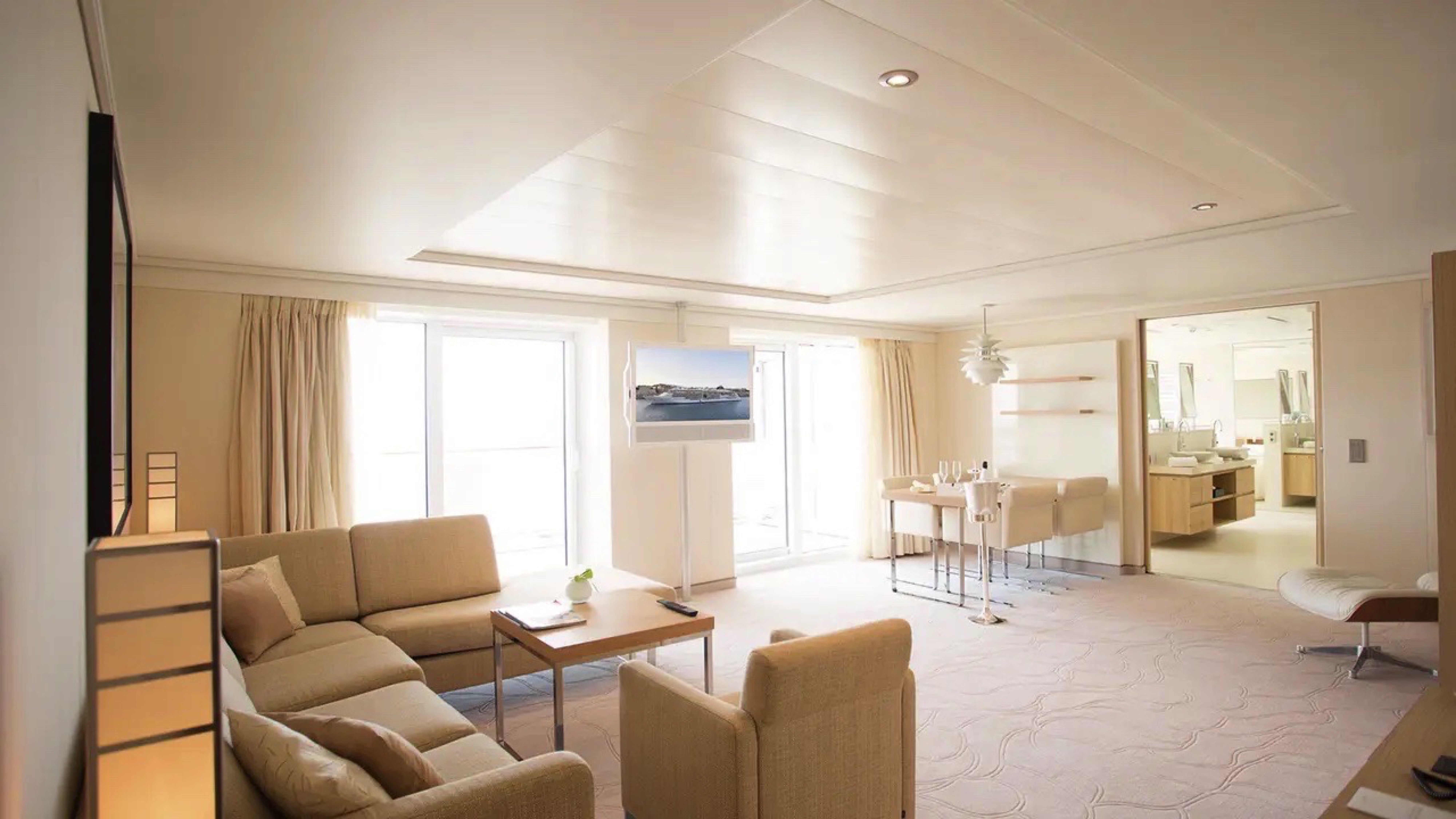
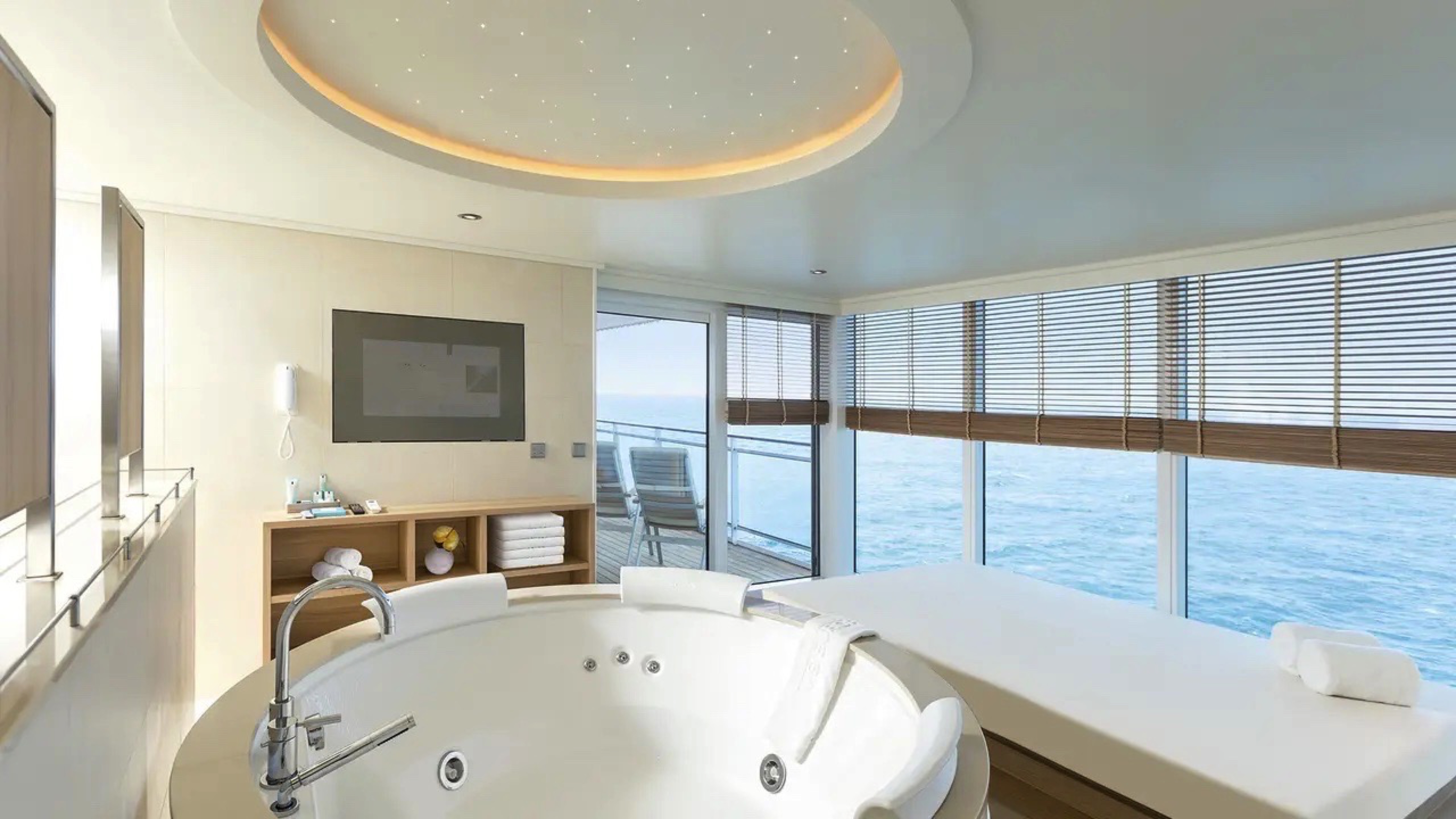
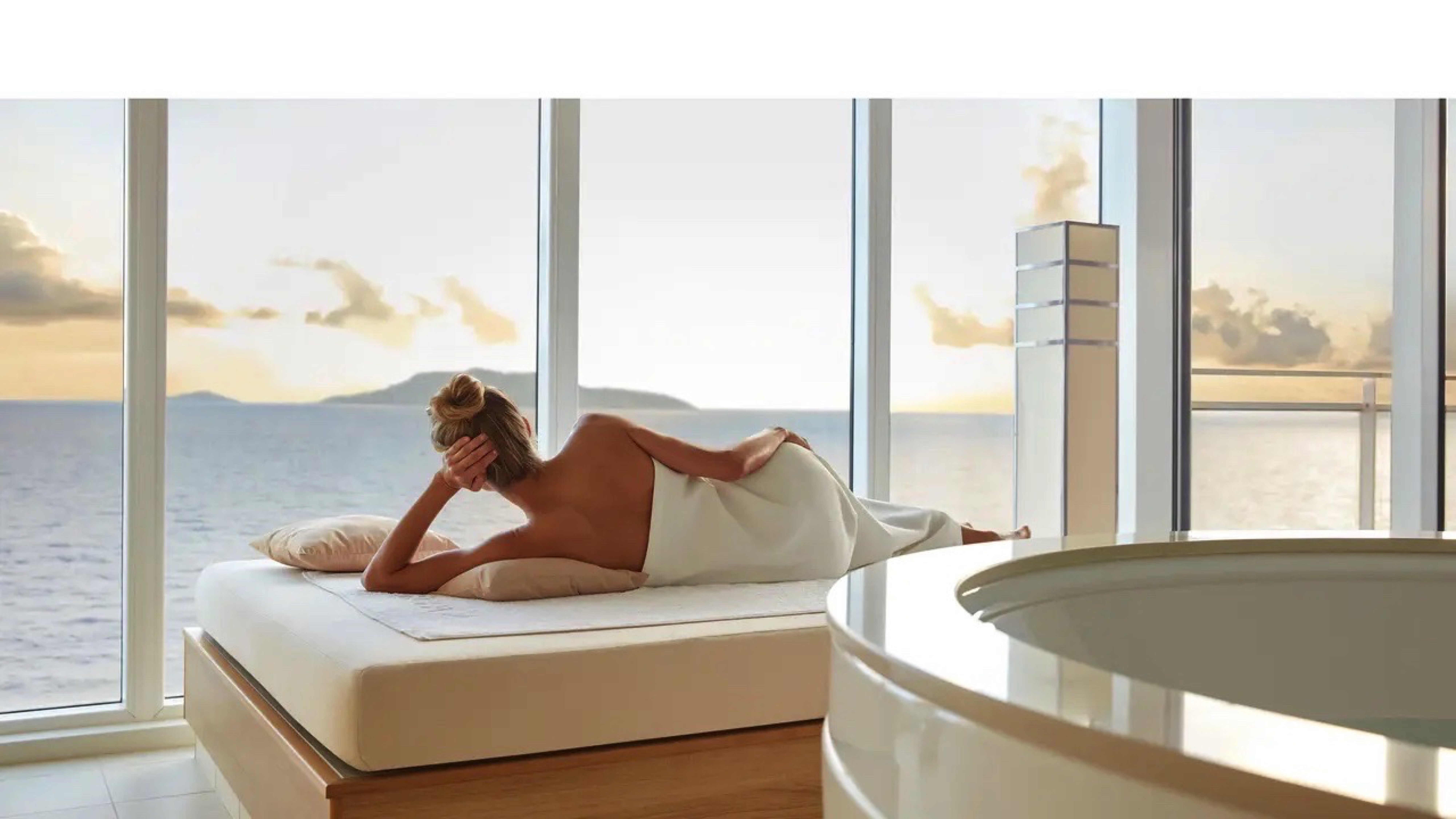
Enjoy luxurious spaciousness on the sea in the Grand Penthouse Suite – in the daybed with a view of the wide sea or while bathing in the middle of the ocean in your private whirlpool.
- Living area: 78 m²; Veranda: 10 m²
- Separate living and sleeping areas
- Separate dining table
- guest toilet
- bathroom with two sinks
- shower with steam sauna
- whirlpool and daybed in the bathroom
- butler service
- Free minibar
- Exclusive service privileges (detailsexperience)
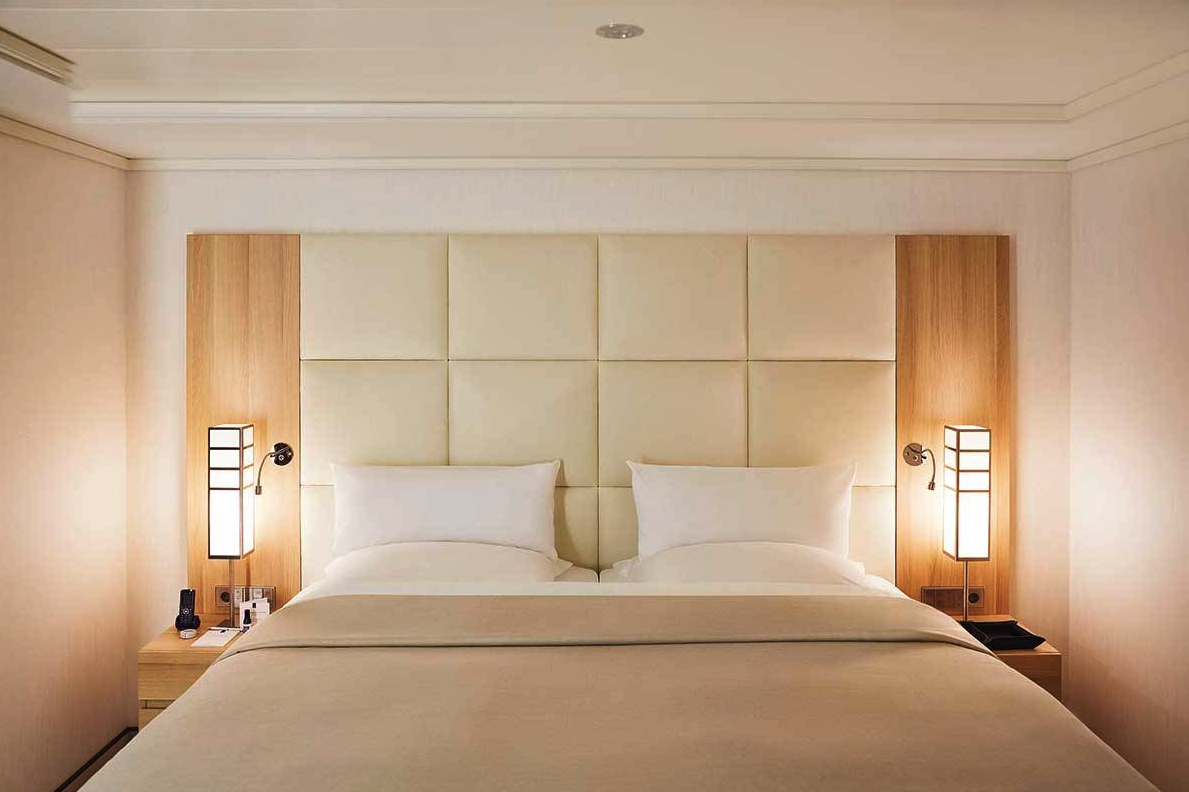
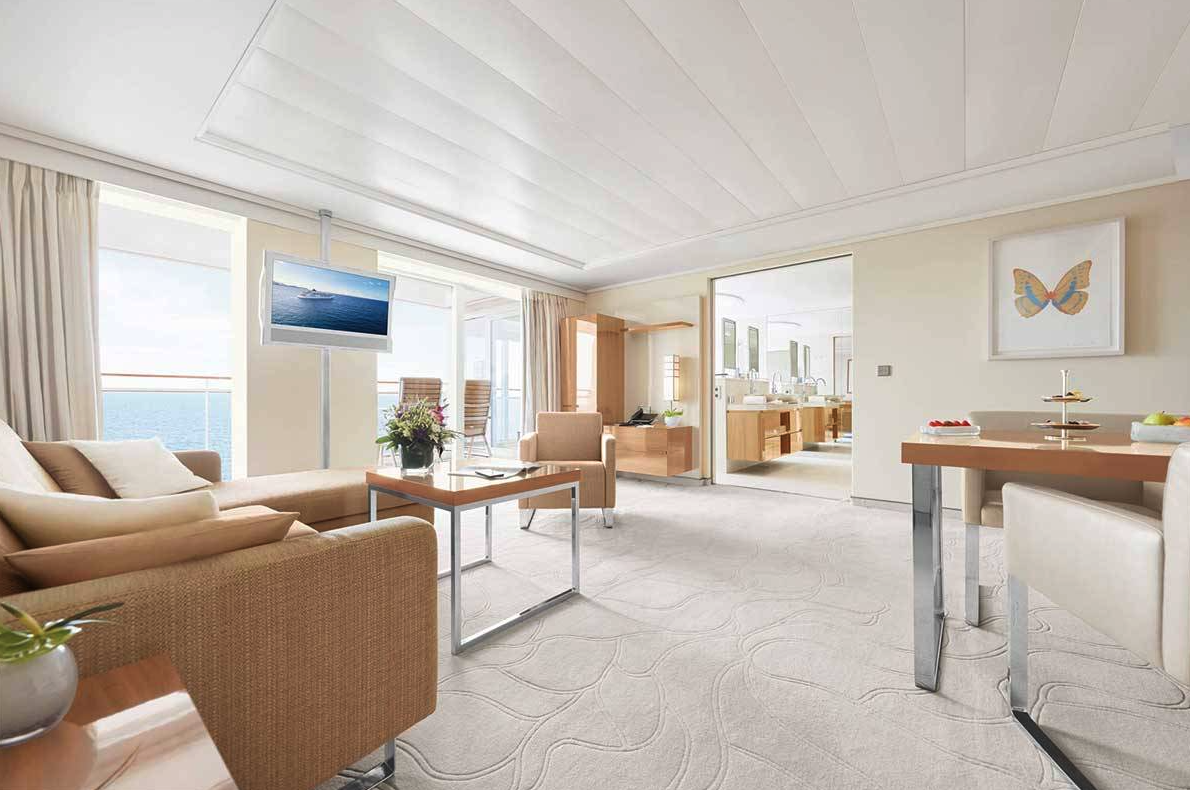
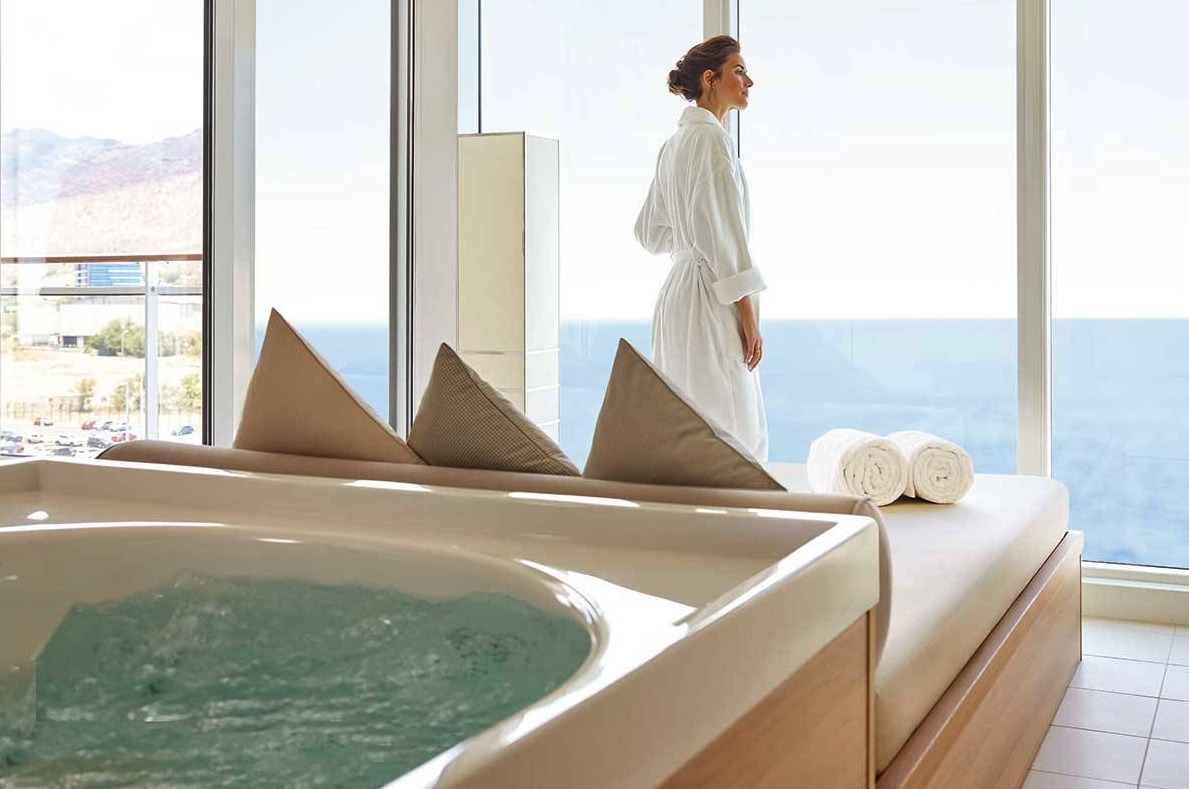
A private oasis of well-being and a stylish haven of peace – in the Grand Ocean Suite you can leave everyday life far behind thanks to a spa bath with panoramic sea views.
- Living area: 42 m²; Veranda: 10 m²
- bathroom with two sinks
- Separate toilet
- daylight in the bathroom
- shower with steam sauna
- whirlpool tub
- Free minibar
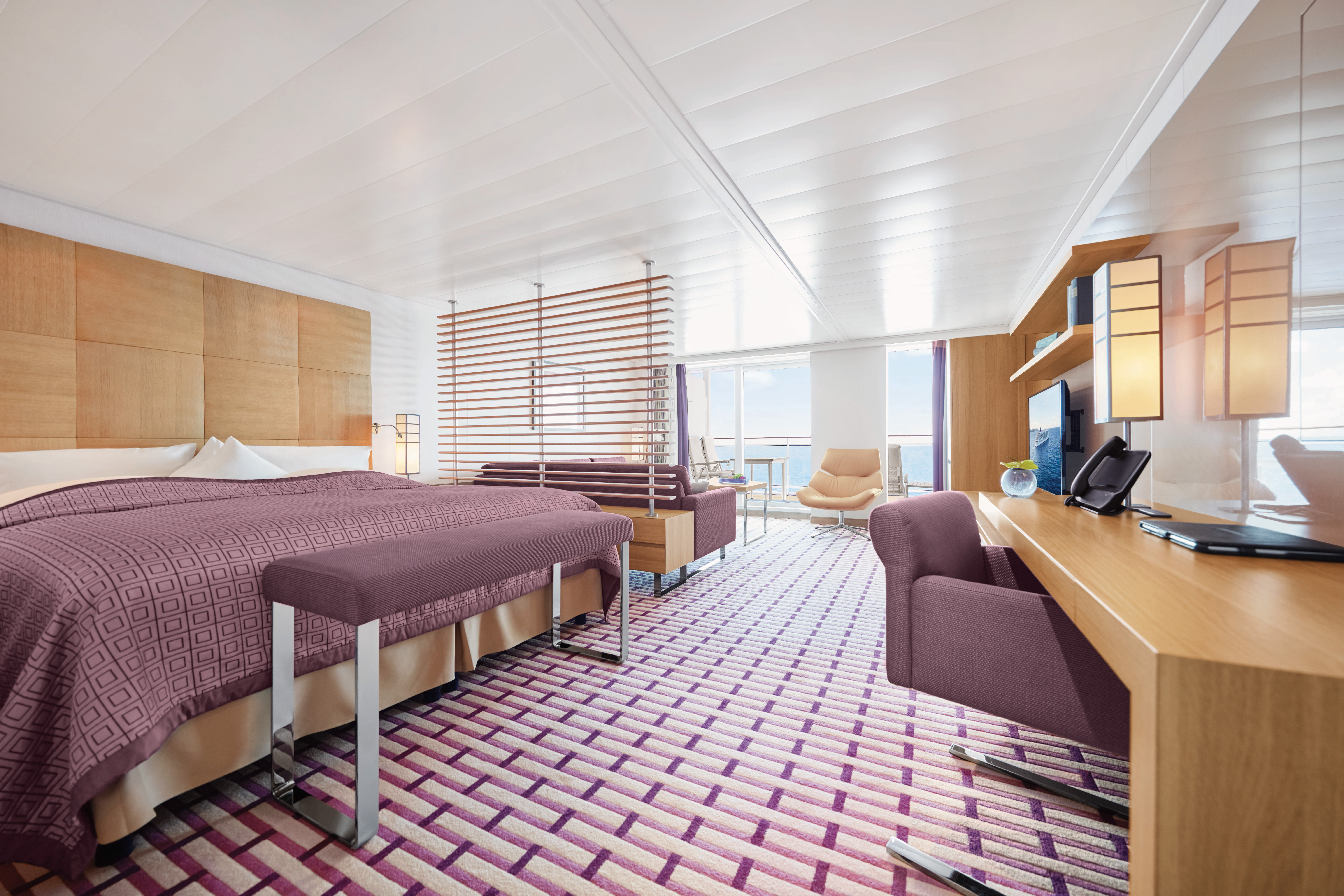
Awonderfully spacious suite with every comfort, uniquely located on the upper decks - is there a nicer place to relax? In the Penthouse Suite, enjoy the endless view of the sea and the amenities of a classic penthouse suite.
- Living area: 42 m²; Veranda: 10 m²
- walk-in closet
- bathroom with two sinks
- whirlpool tub and separate shower
- Separate toilet
- butler service
- Free minibar
- Exclusive service privileges (detailsexperience)
The Penthouse Suite can also be booked with barrier-free facilities (category 13). Here the toilet is in the bathroom.
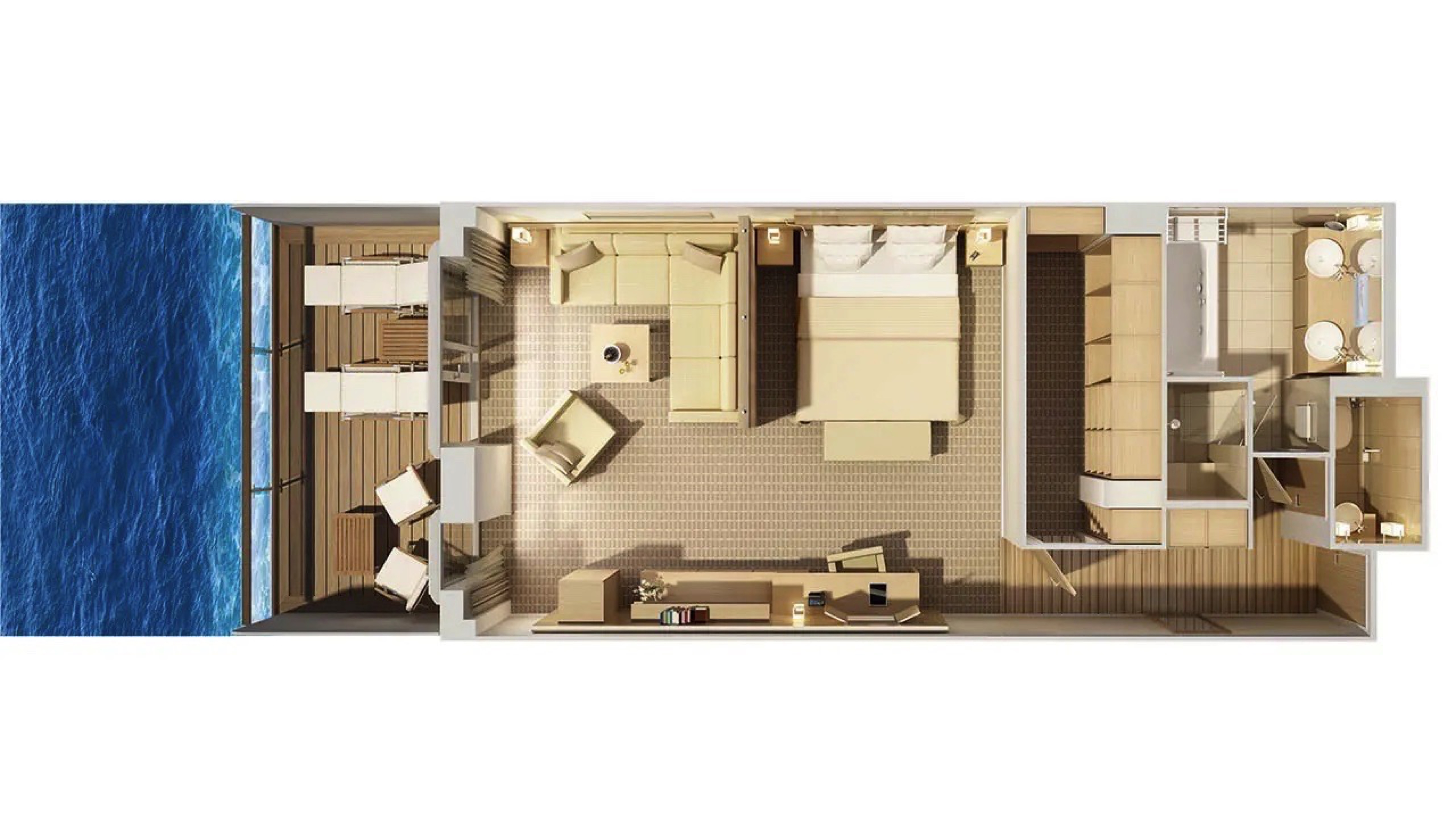
Everyone feels at home here. Lots of space for you and your personal wishes - that's what makes for a relaxing family holiday. In the family apartment, parents and children live in two separate areas that are connected by a door and the balcony. One of the living areas is specifically designed for our younger cruisers.
- Living area: 2× 20 m²; Veranda: 14m² (divisible to 2× 7 m²)
- connecting door between the rooms and verandas
- Separate toilets
- Free minibars
One of the living areas is specifically designed for our younger cruisers:
- Two single beds, one of which is a Pullman bed (80 x 200 cm)
- bathtub (140 x 80 cm)
- Age-appropriate games including games console
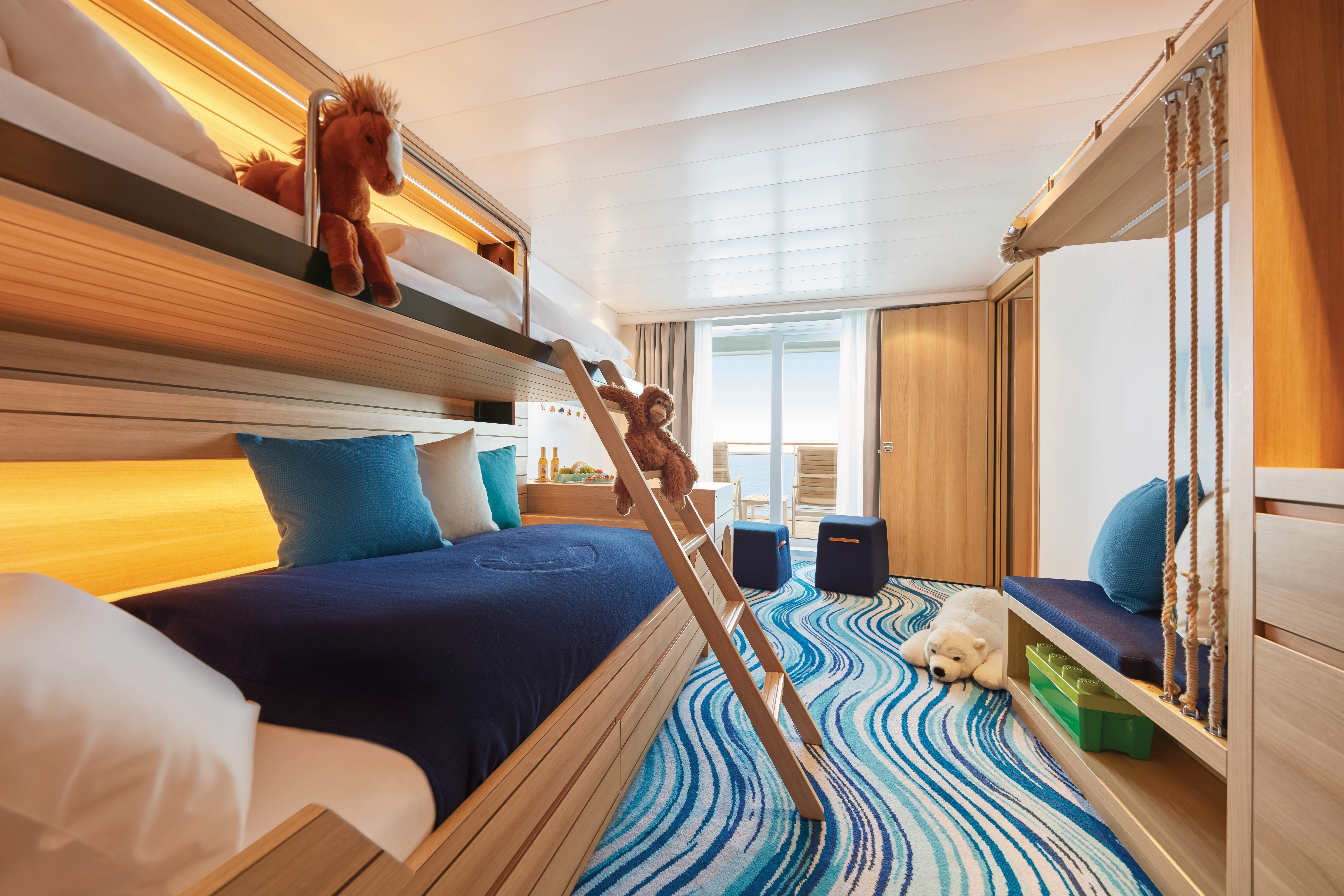
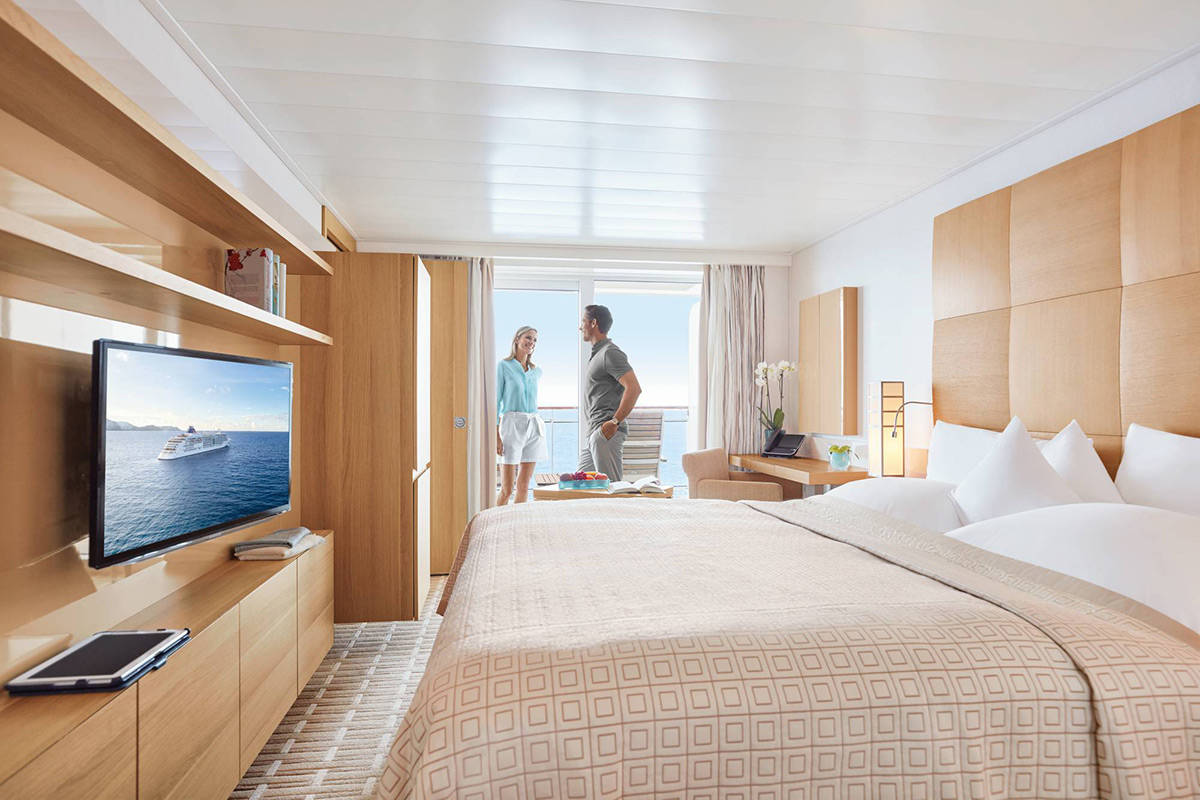
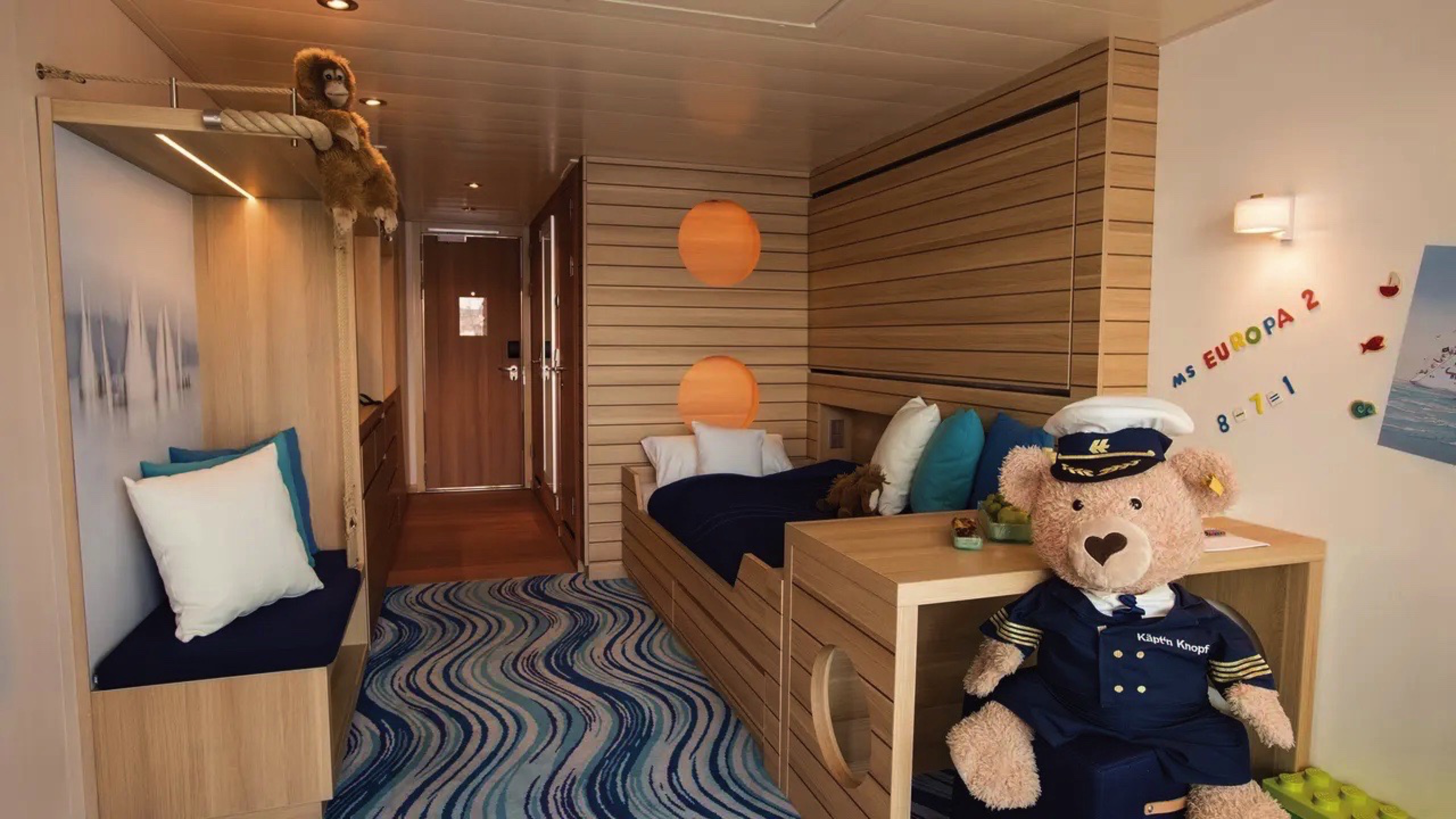
If you want to start the day with a fantastic view, you will have a wonderful time in the Ocean Suite.
- Living area: 28 m²; Veranda: 7 m²
- daylight in the bathroom
- bathroom with two sinks
- whirlpool tub and separate shower
- Separate toilet
- Free minibar
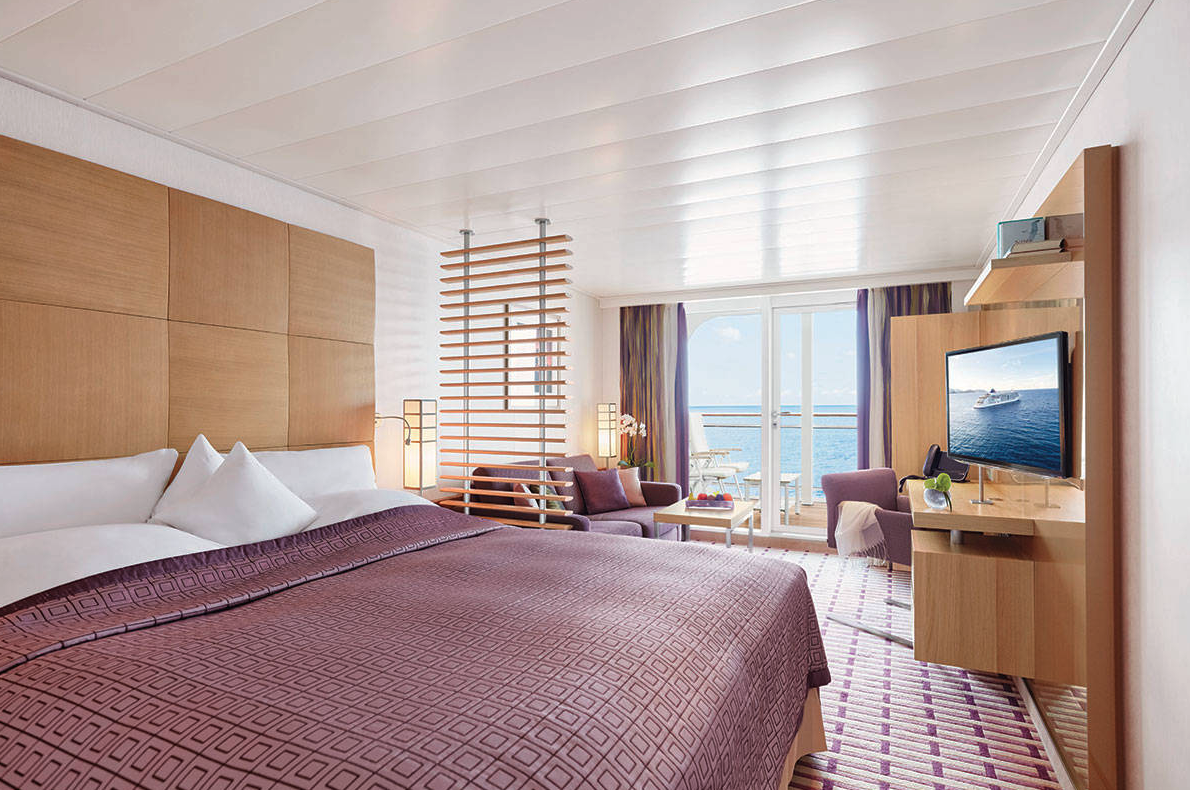
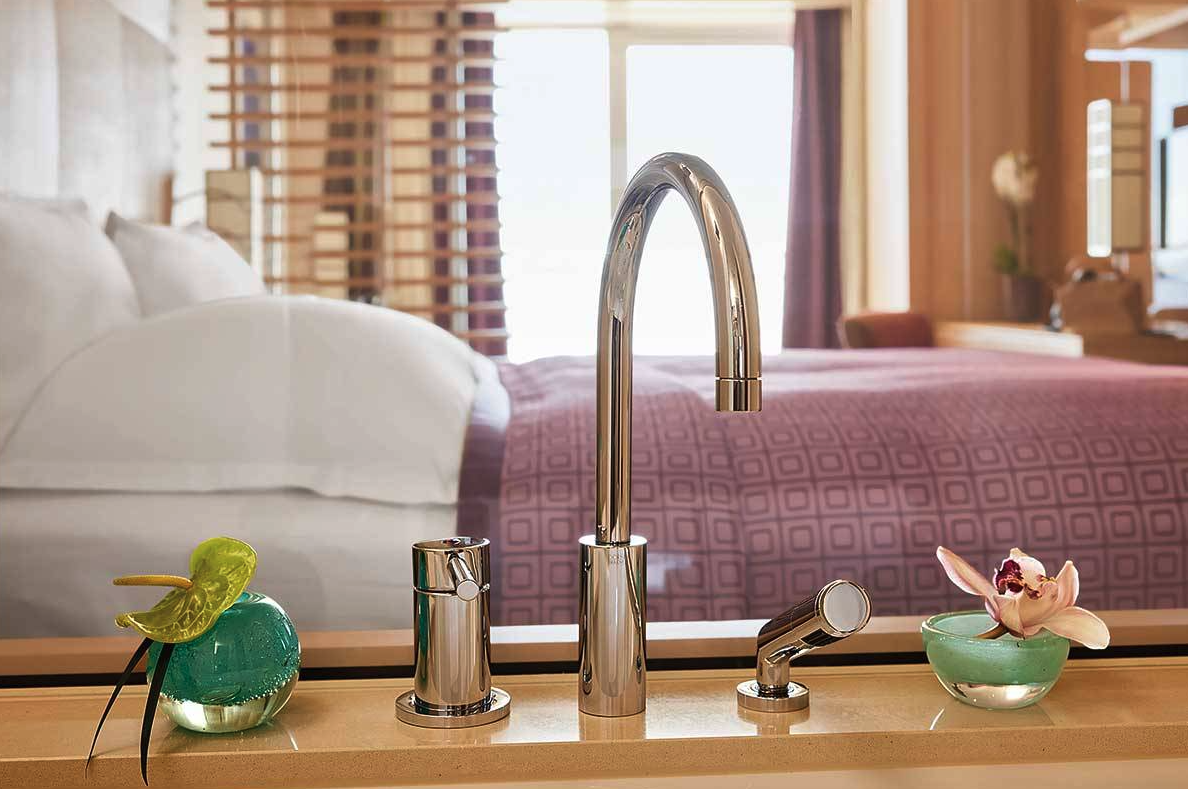
This comfortable suite offers plenty of space for relaxing days on board and a cruise with fantastic views.
- Living area: 28 m²; Veranda: 7 m²
- walk-in closet
- Exclusive living area with chaise longue
- bathtub and separate shower
- Free minibar
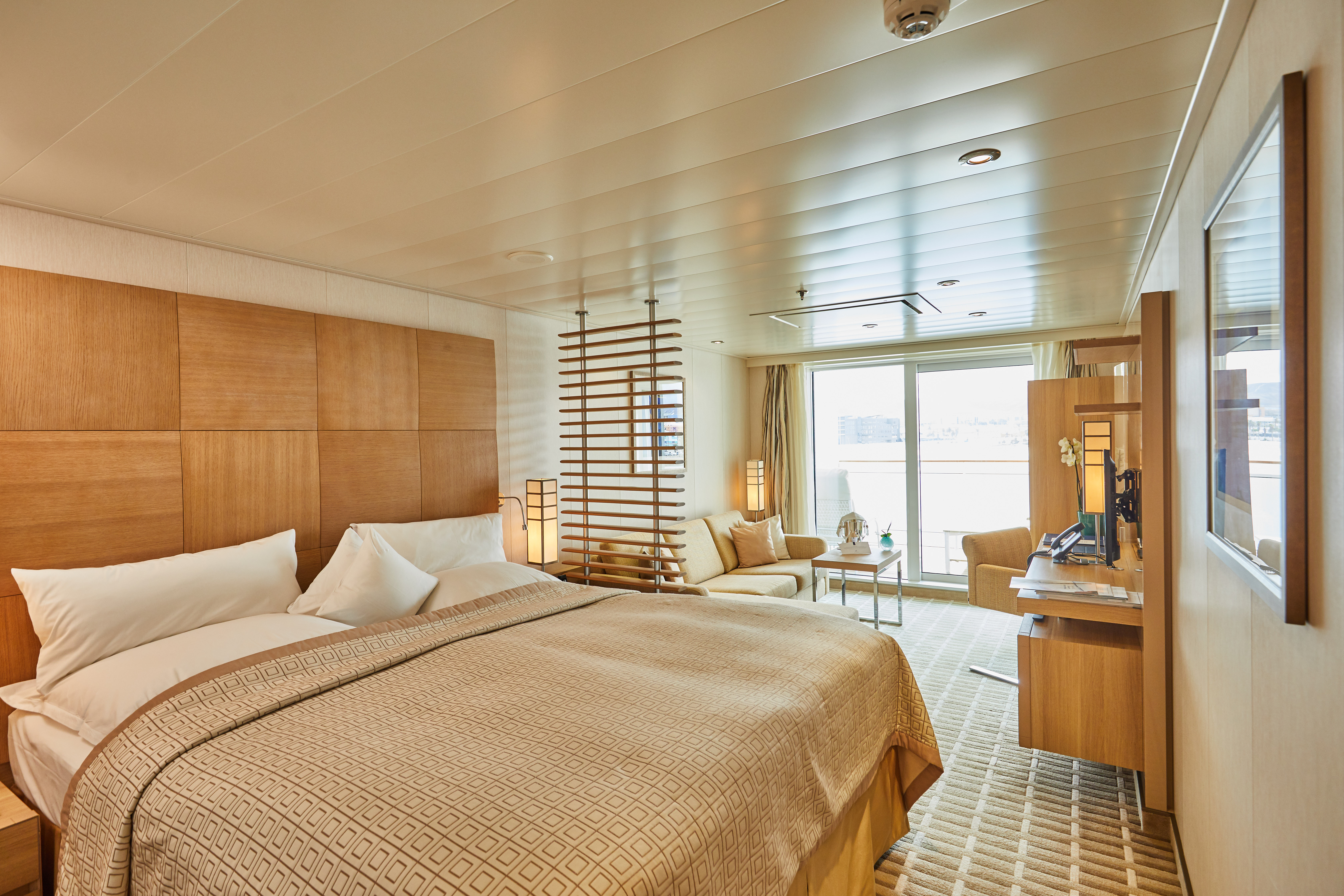
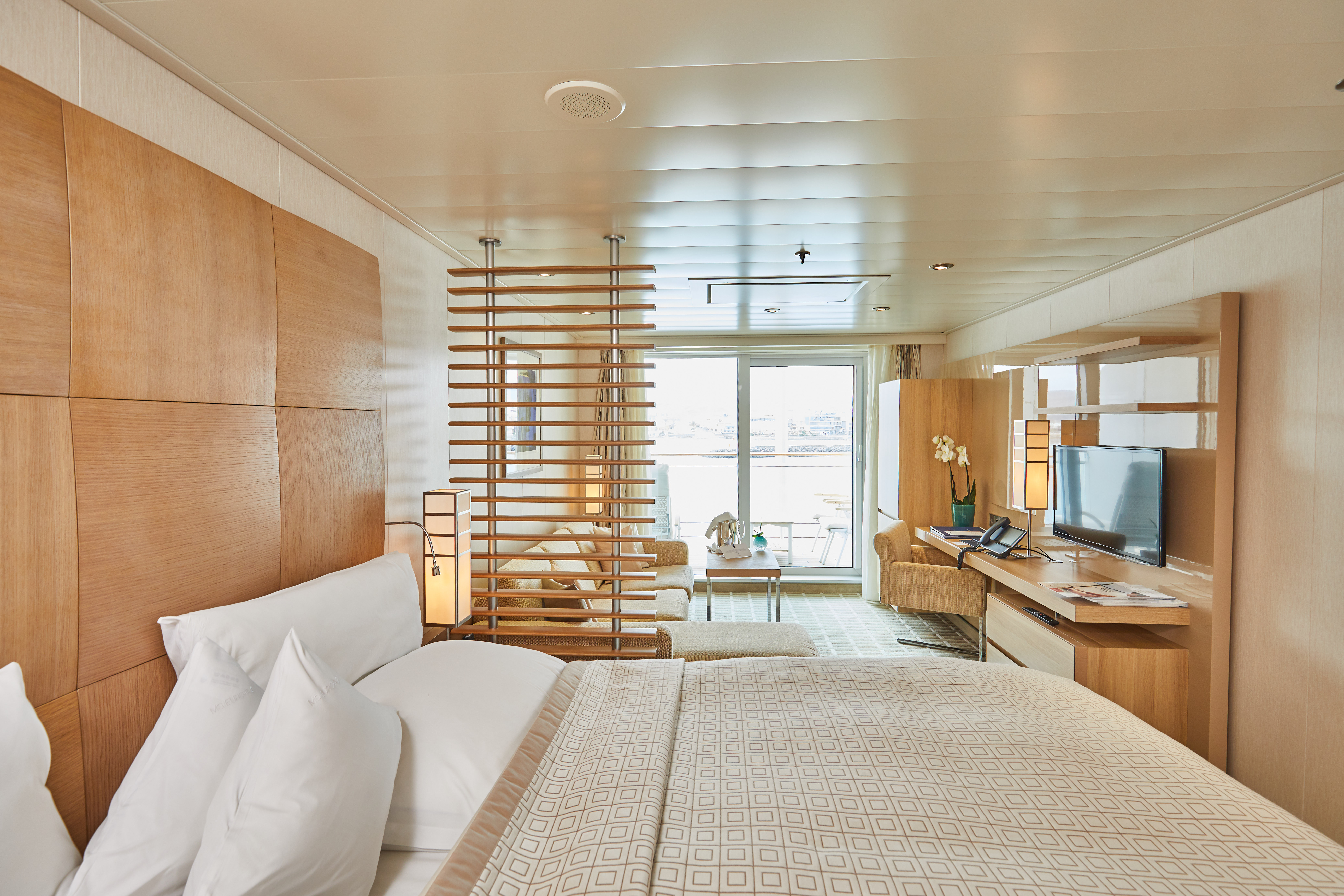
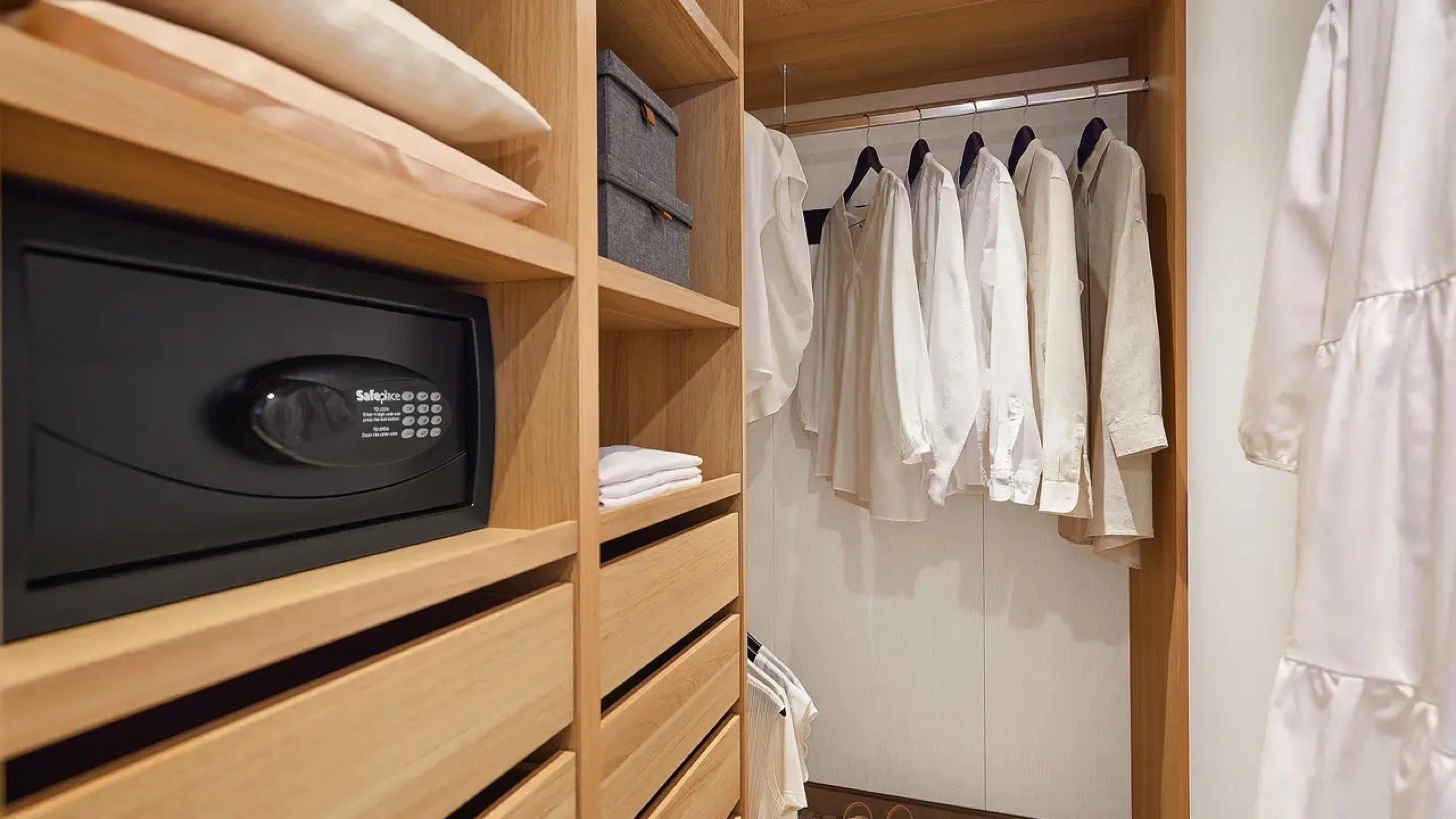
MS EUROPA 2
With a maximum of 500 guests, you can expect the highest level of personal space and individual service. And all this with an extremely luxurious ratio of almost one to one. The EUROPA 2 combines comfort with a high level of flexibility by also heading to small ports and remote corners off the beaten track. Welcome on board the best cruise ship in the world!*
Enjoy every moment
Casual and individual, exquisite and stylish, entirely in line with your requirements – this is the aim of the EUROPA 2 philosophy. Experience a symbiosis of perfection, elegance and aesthetics, and enjoy lifestyle at the highest level in a modern, relaxed atmosphere.
Experience a unique ship
Experience the great freedom - in a relaxed and individual way, yet high quality and stylish. Enjoy a symbiosis of perfection and elegance as well as the highest level of casual luxury - culinary highlights, first-class wellness and fitness offers, exceptional on-board entertainment complemented by the highest level of privacy and individual freedom. With casual luxury for a maximum of 500 guests, the EUROPA 2 combines design and lifestyle, the highest standards and individual freedom.
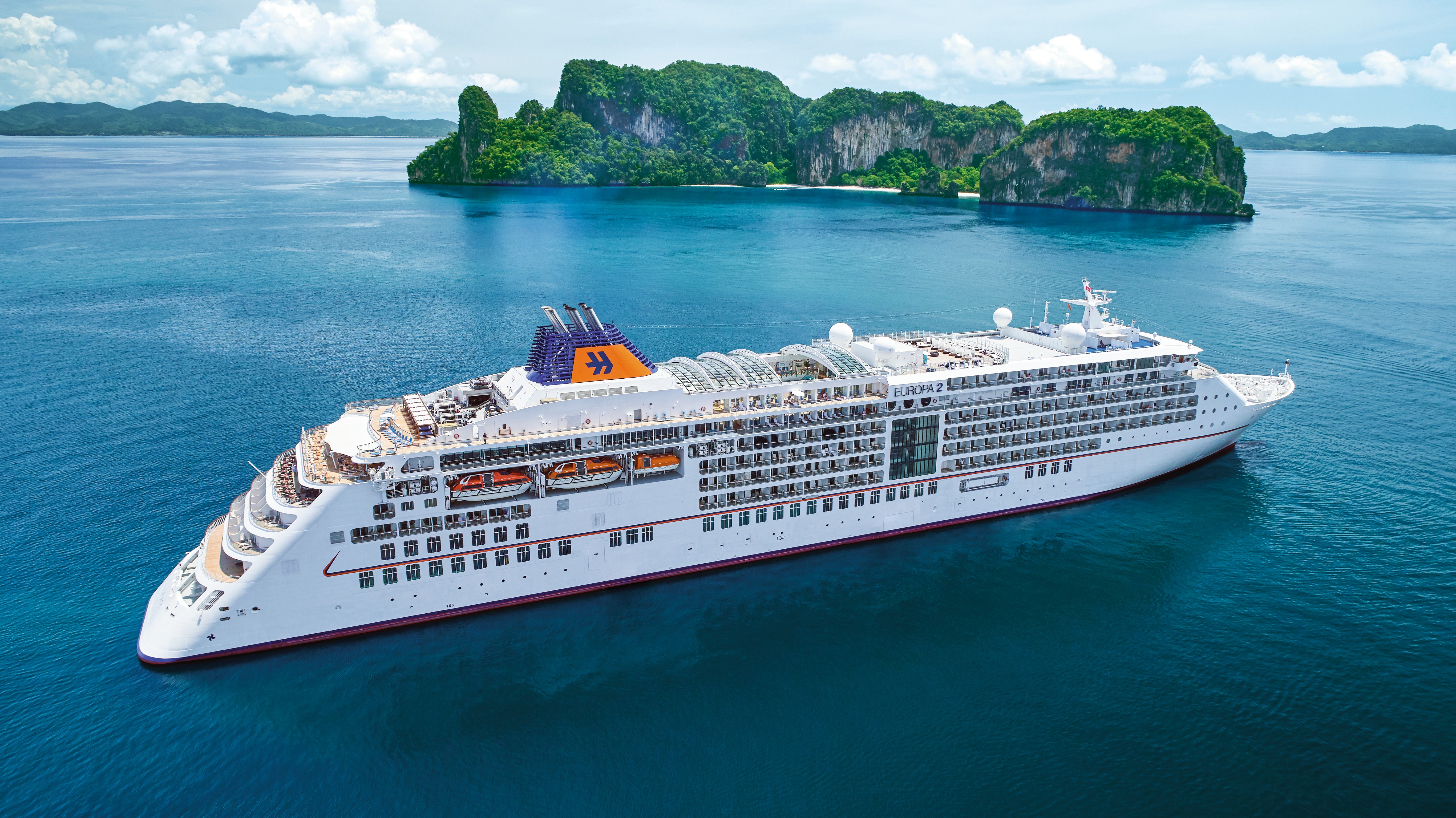
Ship Facts
| Launch Year | 2013 | ||||
| Refit Year | 2017 | ||||
| Language | de+en | ||||
| Gross Tonnage | 42830 | ||||
| Length | 225 | ||||
| Width | 27 | ||||
| Currency | EUR | ||||
| Speed | 21 | ||||
| Capacity | 500 | ||||
| Crew Count | 370 | ||||
| Deck Count | 7 | ||||
| Cabin Count | 251 | ||||
| Large Cabin Count | N/A | ||||
| Wheelchair Cabin Count | 2 | ||||
| Electrical Plugs |
|
Deck 10
- Zodiacs
- Shuffleboard
- Sun Deck
- Bridge
- Veranda Suites
- Penthouse Suites
- Grand Penthouse Suites
- Owner Suites

Deck 9
- Restaurant Yacht Club
- Sushi Restaurant Sakura
- Sun Deck
- Pool
- Conference Room
- Studio
- Gallery
- Culinary School
- Belvedere with library and coffee lounge

Deck 8
- Sansibar
- Tender
- Knopf Club / Kids Club
- Veranda Suites or Ocean Suites
- Family Apartments
- Penthouse Suites (accessible)

Deck 7
- Veranda Suites or Ocean Suites

Deck 6
- Veranda Suites or Ocean Suites
- Owner Suites

Deck 5
- Ocean Spa
- Sauna
- Jacuzzi
- Golf
- Embarkation and disembarkation
- Grand Ocean Suites
- Veranda Suites or Ocean Suites

Deck 4
- Restaurant Weltmeere
- Restaurant Serenissima
- Restaurant Elements
- Restaurant Tarragon
- Grand Reserve
- Tour Office
- Teens' Club
- Boutique / Jeweller
- Reception
- Foyer
- Piano Bar
- Embarkation / disembarkation
- Photo shop
- Club 2
- Collins
- Theatre

Haute cuisine. Extremely casual.
With a keen eye for the finest details, the EUROPA 2's chef will open up new culinary horizons for you. He also offers vegetarian cuisine lovers a fine selection of artfully arranged dishes of the highest quality. Enjoy modern creations or timeless classics with more flexible table times and no fixed seating in our gourmet restaurants.
- Exclusive gourmet restaurants, all at no extra charge, with flexible table times and no fixed seating
- Full board: breakfast, late breakfast, lunch and dinner, patisserie and snacks
- Tea and coffee specialties.
Weltmeere
Restaurant Weltmeere is the biggest restaurant on board. It is located at the stern of the ship and is quite striking thanks to its spacious room concept.
The world a la carte
The flagship restaurant in the heart of the EUROPA 2: Enjoy a daily changing international gourmet cuisine and go on a culinary journey. The Weltmeere bears the very personal signature of our chef and stands for creative culinary highlights - always interpreted in a new and unusual way, of course also vegetarian.
CREATIVE CUISINE WITH A PERSONAL TOUCH
Our chef de cuisine looks forward to pampering you with the highest possible standard of cuisine. The culinary range spans from international to vegetarian menus, which are all interpreted in new and surprising ways.
- The restaurant on board where our chefs de cuisine demonstrate their very personal flair.
- Magical culinary moments with international and vegetarian menus, always interpreted in new and unusual ways.
Tarragon
The Tarragon stands for great French cuisine and bistro classics, served in a stylish Art Deco atmosphere. Look forward to specialties that are as simple as they are sophisticated - like the beef tartare prepared fresh at the table.
Elements
Whether Indian, Vietnamese or traditional Chinese – at Elements the sun rises in the east, even in culinary terms. Enjoy the variety of Asian cuisine, the aroma of lemongrass, seafood and lime – and the exotic, modern flair of Elements.
Serenissima
Experience exquisite classics of Italian-Mediterranean cuisine: The Serenissima combines everything you love about Italian enjoyment and lifestyle. The house recommendation is the Ditaloni con Aragosta Marinata allo Zafferano.
Yacht Club
At the Yacht Club you can enjoy the finest cuisine from breakfast to dinner and an incomparable panoramic view of the sea. Look forward to fresh salads, antipasti from the buffet and grill specialties, fish, pasta and dishes prepared à la minute directly from the open cooking stations.
Sakura
Our Asian chef has mastered the art of conjuring up small masterpieces from the finest ingredients. The results are traditional and modern interpretations of Japanese cuisine as well as exquisite sushi, from classic to creative. In the relaxed atmosphere of the Sakura, you can enjoy an exclusive menu - with a sea view, of course.
Grand Reserve
The Grande Réserve, which is connected to the Tarragon, is all about exquisite wines, which you can also taste in a small group under the guidance of a sommelier (for an additional charge).
Lights out, spotlight on.
When the curtain opens, an unforgettable evening begins. With great acrobatics, dance, comedy, interesting talks, lectures or moving music from classical to pop. Let yourself be inspired by artists, performers and entertainers of the highest level on board the EUROPA 2. A varied show and a diverse entertainment program await you on every trip.
Enjoyment is a question of style
Six bars with unique charm to celebrate the day or night. Each with its own, distinctive atmosphere, from loungey to glamorous. This way you can give every night the perfect start and every day the perfect end. Discover the largest selection of champagne at sea on board the EUROPA 2 and let our sommeliers inspire you.
- Daily changing entertainment program with lectures, concerts, workshops and a sophisticated evening program, for example with live shows or readings
- Free internet on board - One hour per guest per day.
Zanzibar
The younger sister of the Sansibar on Sylt sees much more of the world: the view from the open-air bar over the sea and the parties on the dance floor to DJ sounds are unforgettable. And for a late breakfast and small dishes in the afternoon and evening, it is also the top location.
Belvedere
With its incomparable panorama, the Belvedere is a cozy place to linger. But above all, it is an atmospheric lounge where readings and concerts also take place.
Piano Bar
The piano bar follows the tradition of bars in classic grand hotels: you can reflect on the day with a first-class drink and pleasantly understated music from the Steinway grand piano. You can also enjoy a sea view that probably no other hotel in the world can offer.
Club 2
With its cosy bar and lounge area and small stage, Club 2 adapts to the theme of the itinerary and is constantly reinventing itself with its colour and lighting concept. Let the day end with exquisite drinks and small snacks, in keeping with the destination, and be inspired by the diverse entertainment programme.
Collins
The perfect setting for the perfect drink, nothing more and nothing less. In a classic, stylish ambience with club chairs and precious woods. With Cuban specialties from the humidor.
Theatre
- Multifaceted shows.
- Performances with numerous guest stars, soloists, entertainers and acrobats.
- Concerts from classical music to pop.
- Vaudeville highlights.
- State-of-the-art stage technology with LED screen.
Art
art2sea
Look forward to an inspiring journey into the world of art - art2sea welcomes important artists, gallery owners, art experts or curators from major museums. In cooperation with renowned experts, fascinating insights into the international art world are created. Exclusive exhibition, gallery and museum visits offer you a look behind the scenes.
Art on the High Seas
A walk through the bright corridors of the EUROPA 2 is as inspiring as a day in a museum of contemporary art. More than 890 original paintings and exhibits, photographs and sculptures - from Damien Hirst to Gerhard Richter - accompany the ship and its guests around the world. This collection is complemented by changing exhibitions and lectures by artists on various art historical topics.
pool bar
In the pool or at the bar next to it – where does the perfect refreshment await? The relaxed meeting point on the pool deck serves snacks for breakfast and lunch, legendary waffles in the afternoon, fresh juices and coffee specialties. It offers a casual atmosphere until the evening.
MS EUROPA Unplugged
Instead of in large concert halls, you can experience your star acoustically and up close - the concerts in the EUROPA 2 theatre thus have an almost private touch. Enjoy exclusive encounters with outstanding musicians.